Signals
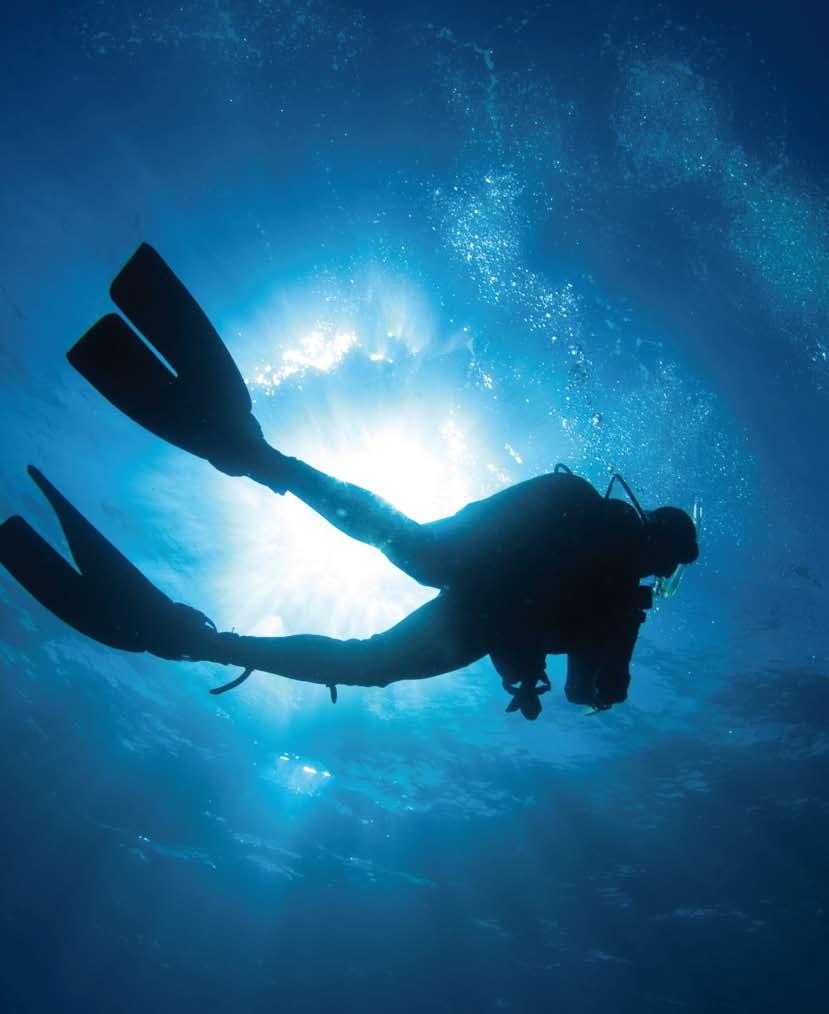
March April May 2010 Number 90


The museum’s unique venues, sweeping city skyline, water views and fine catering will make your wedding day one to remember!
Drinks on destroyer Vampire … dinner for 150 in the elegant Terrace Room ... harbourside Yots Café … or up to 300 in our North Wharf marquee (mid-November to mid-December).
Award-winning Bayleaf Catering is renowned for innovation, quality menus and fine service delivery. A special place to tie the knot
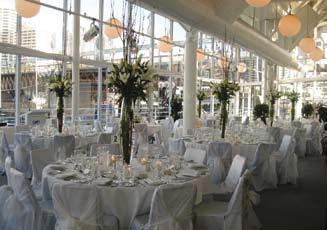
02 9298 3649
email venues@anmm.gov.au www.anmm.gov.au/venues

cover: Australian National Maritime Museum underwater archaeologist and shipwright Lee Graham, in crystalclear tropical waters. He was one of the team on a research expedition to Wreck Reefs off the Queensland coast in December 2009, led by the museum in conjunction with its sponsor and partner the Silentworld Foundation. The team’s report begins on page 2. Photographer Xanthe Rivett
Signals
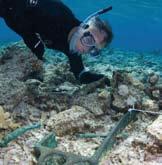



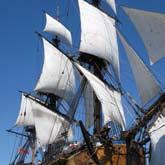
2 Wrecks, reefs and guano
Museum’s latest maritime archaeology expedition in tropical waters with the Silentworld Foundation
10 MMAPSS marshals maritime memories
Now in its fifteenth year, our grant scheme is casting a wider net than ever
14 Meet our council
A brief introduction to the members of the museum’s governing body
16 Silver Cloud III
An invitation to our Members to participate in the relaunching of a Halvorsen heritage classic
21 Members events
Talks, tours, cruises, seminars, children’s events … autumn calendar for Members
26 What’s on
Autumn exhibitions, events for visitors young and old, programs for schools
32 Paradise lost?
Aboriginal culture cruises on Sydney Harbour present stories of a maritime lifestyle
36 Sail handling on Endeavour
Skills and knowledge of 18th-century seamanship learned during a voyage round the world
42 Tales from the Welcome Wall
A migrant’s journey from the Berlin Wall to the Welcome Wall
44 Collection
The Baagi vase by Uncle Vic Chapman 46 Currents Safety aloft; tactile
tour of submarine Onslow 48 Bearings
From the director
March to May 2010 Number 90 2 10 32 16 Contents 36 Cert no SGS-COC-006189
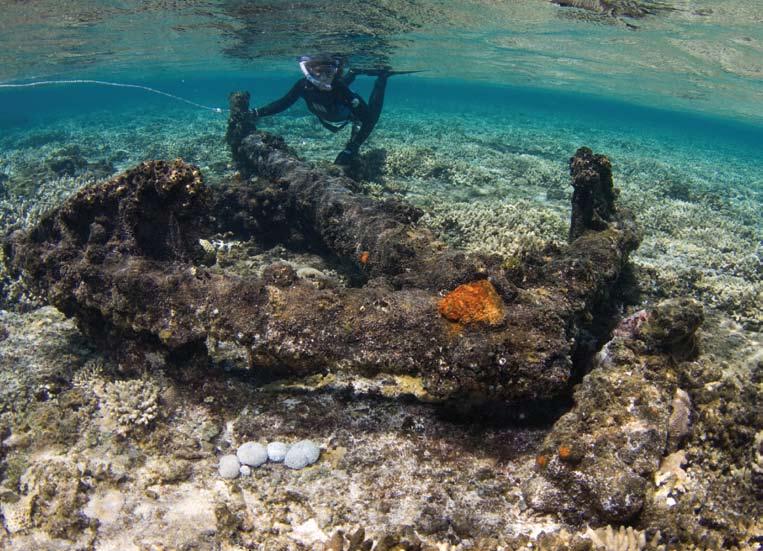
Si GNALS 90 M ARCH T o M AY 2010 2
wrecks reefs
and guano
The Australian National Maritime Museum has completed a second successful collaborative project with the Silentworld Foundation – an archaeological expedition in tropical waters to learn more about the site of Matthew Flinders’ dramatic shipwreck during his historic survey of the Australian continent. This account comes from expedition leader and museum curator and maritime archaeologist Kieran Hosty.
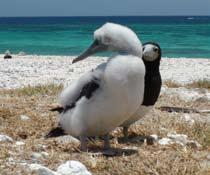
On 17 August 1803 the great navigator and charter of the Australian continent, Captain Matthew Flinders RN, was shipwrecked on an isolated, uncharted coral reef off Australia’s east coast, while returning to England with the precious, as yet unpublished charts, journals and manuscripts of his epic Australian voyages. Wreck Reefs, which gained their name from the loss of the ship that was carrying Flinders – HMS Porpoise, and an accompanying merchant ship Cato – are a group of low-lying coral reefs and sand cays 18 nautical miles (25 kilometres) long and lying 230 nautical miles (450 kilometres) east of Gladstone, Queensland. Flinders had not yet fully completed the survey of Australian coasts that had been entrusted to him by the Lords of the Admiralty. His previous ship HMS Investigator – on which he had circumnavigated the continent and done masterful survey work – had become perilously rotten and was unfit for further voyaging. No suitable replacement was available in the colony, so he was returning to England to seek another expedition ship. To get there, Governor King had assigned him HMS Porpoise, a 308-ton Spanish-built vessel captured by the Royal Navy in 1799 and commissioned as a 10-gun sloop. Her master was Lt Robert Fowler. His orders were to allow Flinders whatever time he needed to chart Torres Strait, and then to carry him to England by Flinders’ preferred route.
On 10 August 1803 Porpoise left Sydney in company with two other ships. The 430-ton, English armed merchant ship Cato, John Park master, was bound for Batavia in the Dutch East Indies. With them sailed a 750-ton, 32-gun East India Company Extra Ship Bridgewater, master E H Palmer, bound for Calcutta. Taking the outer route around the Great Barrier Reef, the three vessels travelled in convoy.
In
the
about a minute,
ship was carried amongst the breakers; and striking upon a coral head, took a fearful heel over onto her larboard beam ends
On the evening of 17 August the convoy was under reduced sail after sighting some reefs and a sand cay in uncharted waters that afternoon. Porpoise was in the lead, Cato on its port stern quarter and Bridgewater on the starboard. The watch on Porpoise sighted breakers but the ship, unable to come around under reefed topsails, struck the southern edge of a reef and was driven up onto its platform by the prevailing weather.
…In about a minute, the ship was carried amongst the breakers; and striking upon a coral head, took a fearful heel over onto her larboard beam ends, her head being north-eastward… When the surfs permitted us to look to windward the Bridgewater and the Cato were perceived at not more than a cable’s length distance; and approaching each other so closely, that their running abord seemed to us inevitable…
Matthew Flinders, A Voyage to Terra Australis, London 1814
Cato’s Captain Park, seeing Porpoise go up onto the reef, had tacked to the east at the same time Bridgewater tacked to the west, putting both vessels on a collision course. Park ordered Cato to come off the wind, but while this averted collision it resulted in further disaster, as Flinders relates:
…the Cato struck upon the reef about two cables length from the Porpoise, we saw her fall over her broad side and the masts almost instantly disappeared…
Porpoise lay with its hull facing towards the wind and seas, protecting the decks and offering shelter to the crew and passengers on board. The Cato, however, turned side-on to the surf and rolled into the direction of the prevailing wind, exposing the decks to the pounding waves. The vessel quickly began to break
left: Toni Massey from Flinders University, SA, inspecting an old Admiralty long-shank anchor, one of three bower anchors carried by HMS Porpoise
Si GNALS 90 M ARCH T o M AY 2010 3
top: A Brown-face Boobie and its chick on Porpoise Cay, Wreck Reefs. All expedition photography by Xanthe Rivett

Before dark, five hogsheads of water, some four of salt meat, rice and spirits were landed, with such of the pigs and sheep as had escaped drowning
up and by morning had almost disappeared, with just the bow and foremast chains exposed above the surf. Three crew had drowned.
The East India Company ship Bridgewater missed the reefs and Captain Palmer made what some would call a halfhearted attempt to work back to windward to the reefs, to determine the fate of the wrecked ships and their people. Instead of coming to their aid Palmer continued to his destination India, where some of the crew left the ship in protest over his actions. But fate had not finished with Palmer; Bridgewater disappeared with the captain and his remaining crew on its very next voyage, somewhere in the Indian Ocean.
Back on Wreck Reefs, 18 August dawned with slightly more hope than the preceding desperate night. In the words of Flinders, who was the senior naval officer and quickly took charge of the survivors:
… with the daylight appeared a dry sand bank, not more than half a mile distant, sufficiently large to receive us all with what provisions might be got out of the ship … At low water, which happened about two o’clock, the reef was dry very near to Porpoise, and both officers and men were assiduously employed in getting upon it provisions and their clothes … before dark, five hogsheads of water, some four of salt meat, rice and spirits were landed, with such of the pigs and sheep as had escaped drowning …
Of equal or greater concern to Flinders were the precious charts, journals and notes from his surveys in HMS Investigator, most of which he salvaged although some were water-damaged. Most of the Australian botanical specimens he was carrying back to England were lost. The crews from both vessels set up camp on the small sand island that they named Porpoise Cay, erecting tents from spars and sails.
mile journey in 12½ days, another of those amazing open-boat ocean passages that the resolute sailors of those days seemed to undertake quite routinely, when the necessity arose!
For six weeks the rest of the survivors, under the command of Porpoise’s Fowler, subsisted on Porpoise Cay. With them was Flinders’ brother Samuel, a capable navigator who had accompanied the explorer to Australia, and who spent some of his time accurately plotting the location of Wreck Reefs. Naval discipline prevailed and the men salvaged what they could from the two wrecks and began work constructing two small, ‘rakish schooners’ from timbers salvaged from the wrecks. They completed one, which they named Resource, and used it to visit Bird Islet, the eastern-most cay in the group and a rich dietary source of sea-birds and eggs.
Fortunately for the survivors it was not the cyclone season, since a strong tropical cyclone would have swept them from the low sand cay. Instead, on 7 October, they used their salvaged carronades to fire a salute to Flinders who had returned to rescue them with not one but three ships – the merchant ship Rolla and two colonial schooners, Francis and Cumberland! Flinders called this triumphal return ‘one of the happiest moments of my life’.
In Port Jackson the resourceful Flinders had secured the help of Governor King to contract the visiting merchant ship Rolla, bound for Canton, to sail via Wreck Reefs and rescue some of the shipwrecked men. Others would return to Port Jackson on the Francis, a small schooner that was one of the first seagoing ships built in the colony. The third rescue vessel was the government schooner Cumberland, launched in Port Jackson in 1801. Flinders had obtained Cumberland to continue his voyage through Torres Strait to England.
above: Matthew Flinders, lithograph, 1814. ANMM collection
opposite top: The survivors’ encampment on Porpoise Cay in 1803, with the hull of the wrecked HMS Porpoise on the reef at the left. Engraving by i Pye, based on the drawing by expedition artist William Westall, from Matthew Flinders’ A Voyage to Terra Australis, G & W Nicol, London 1814
right: A school of Blue Parrotfish, also known as Mini-fin Parrotfish, on the southern edge of the Cato Gutter, Wreck Reefs.
On Friday 26 August, leaving his Australian survey charts sealed in boxes on Porpoise Cay, Flinders set sail for Port Jackson in the largest of the surviving ship’s cutters, which they renamed Hope It carried three short, demountable masts and lugsails. With him were Captain Park of Cato and a dozen sailors – enough to provide two watches to man the six oars when the wind failed or was adverse –plus three weeks’ provisions and two half hogsheads of water. Under Flinders’ command they made the 760 nautical
The officers and crew of Porpoise and Cato were distributed among the flotilla. Rolla sailed on to China, Francis and the ‘rakish schooner’ Resource built on Porpoise Cay by the survivors returned to Port Jackson, while Cumberland sailed for England under the command of Matthew Flinders, carrying most of his Australian survey materials. But unfortunately for him war had broken out between France and England and when Flinders arrived in Mauritius in December 1803 he was detained as a spy by the island’s commander General Charles DeCaen for seven long years – until June 1810!
Si GNALS 90 M ARCH T o M AY 2010 4
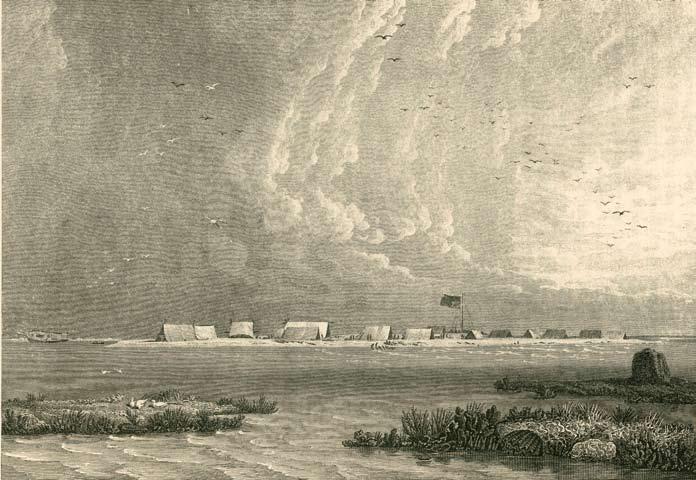
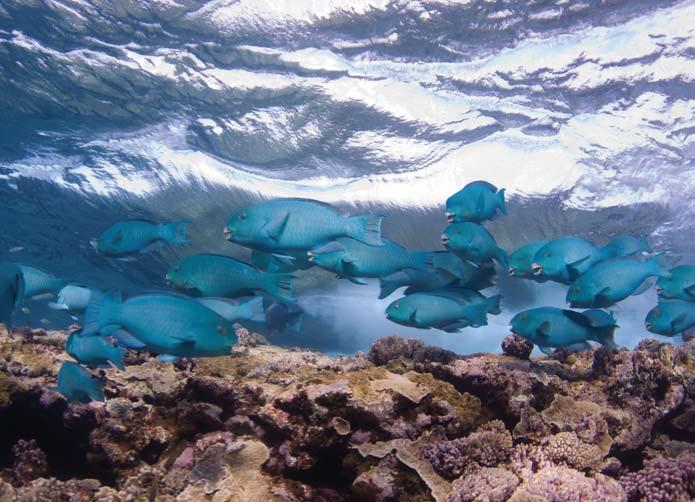
Si GNALS 90 M ARCH T o M AY 2010 5
Wreck Reefs after Flinders
Following Flinders’ departure Wreck Reefs were visited infrequently by bechede-mer fishers from the colony, until May 1854 when the reefs claimed another ship, the 250-ton Mahaica. The position of the reefs – lying across the main outer shipping route from Sydney to China –along with growing traffic and increasing activity in the South Seas whale fishery led to further shipwrecks in 1856, 1861, 1870, 1879, 1882 and 1886.
Bird Islet at the eastern end of Wreck Reefs was occupied from the mid-1860s to the early 1900s by the Tasmanian-based Anglo-Australian Guano Company. It quarried the metre-thick deposits of sea-bird excrement known as guano, and exported thousands of tons of the dried and bagged fertiliser to Melbourne, Sydney, Launceston and Hobart where it fetched £8 a ton.
From the early 1900s the reefs and cays were largely undisturbed until the early 1960s when a growing interest in Australia’s maritime past, together with the development of recreational scuba diving, saw a series of private expeditions visit the reefs searching for the remains of shipwrecks. Scuba diving pioneers led by Ben Cropp visited in 1965 and quickly found the remains of HMS Porpoise on the reef top in shallow water directly east of Porpoise Cay.
The divers also located another wreck approximately 400 metres to the west of HMS Porpoise, which they took to be Cato. Further visits to Wreck Reefs are

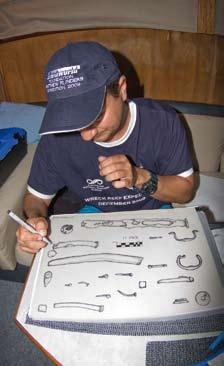
Searching for something wherewith to make a fire on the first night of our landing a spar and a piece of timber, worm eaten and almost rotten, were found and burnt
site indicated a vessel of a much later date than 1803. It was hypothesised that Cato lay further towards the east.
In 1990 crew from the dive charter vessel Boomerang reported a cluster of shipwreck material consisting of a single iron cannon, Spanish coins and casuarina logs approximately 400 metres east of the Porpoise site. This suggested an association with Cato, which was carrying a cargo of Australian timber. The cannon was raised in 1991 by a team from the Queensland Museum. It was later identified from the trunnion marks as having been manufactured by the Carron Iron Foundry at Falkirk in Scotland between 1770 and 1780.
The Silentworld–Australian National Maritime Museum expedition
recorded in 1966, 1967 and again in 1983 when divers from the Maritime Archaeological Association of Queensland relocated the two wrecks near Porpoise Cay, along with a third wreck found at Bird Islet that was tentatively identified as the 151-ton brigantine Harp wrecked in 1861.
Divers from the Queensland Museum and the Maritime Archaeological Association of Queensland visited Wreck Reefs and the site of HMS Porpoise in May 1987 and again in May 1988. A bronze bell – unfortunately lacking a name – was raised. It was during these visits that the earlier identification of the second shipwreck site as that of Cato was questioned, since the presence of copper sheathing and the style of anchor at the
In 2008 the Australian National Maritime Museum began a fruitful collaboration in Australian maritime archaeological projects with the Silentworld Foundation, part of the Australian-based shipping company Silentworld Ltd. Our first joint expedition that year located the wreck of Lieutenant Phillip Parker King’s survey vessel, HMCS Mermaid, lost on an uncharted reef south of Cairns in 1829. In December 2009 the museum and the Silentworld Foundation came together once again in another collaborative expedition – this time to locate and survey the remains of HMS Porpoise and the merchantman Cato, which played such an important role in the dramatic story of Flinders’ encounter with Wreck Reefs.
left to right: Silentworld Foundation dive supervisor Kate Thompson with olive-green Sea Snake, Bird islet Reef.
Shawn Arnold from Flinders University, SA, recording artefacts recovered from Porpoise Cay.
Si GNALS 90 M ARCH T o M AY 2010 6
Silentworld Foundation volunteer Andrew Turner in the surf break near the Cato Gutter
Since much archaeological work had already been conducted there, our primary aims were to survey several areas not previously examined, attempt to pin down the location of Cato, survey the guano workings and associated shipwrecks at Bird Islet, and try to solve one other interesting and puzzling maritime riddle that Flinders had recorded on that very first night cast up amid the breakers of Wreck Reefs.
In searching for something wherewith to make a fire on the first night of our landing a spar and a piece of timber, worm eaten and almost rotten, were found and burnt. The timber was seen by the master of the Porpoise, who judged it to have been part of the stern post of a ship of about 400 hundred tons …
Matthew Flinders, A Voyage to Terra Australis, London 1814
This was also recorded by the captain of HMS Porpoise, Lieutenant Fowler. Before the timber remains were burnt on that cold winter’s night they were identified as being part of a stern post and the quarter galleries of a large, Europeanbuilt ship, possibly a frigate. Both Fowler and Flinders interviewed the sailors who found the wreckage and later passed on the information to Sir Joseph Banks. Even when under house arrest in Mauritius, Flinders reported the discovery of the wreck to his French captors since he believed that it may have been associated with one of the ships from La Perouse’s expedition that had disappeared after departing Botany Bay in March 1788. The fate of La Perouse had been one of the great mysteries of that great age of Pacific exploration.
Since La Perouse’s ships were later found off Vanikoro in the Solomon Islands, and no pre-1803 vessels are known to have been wrecked off this part of the Queensland coast, the wreckage seen by the survivors in 1803 presented an intriguing mystery. Was it a Spanish vessel blown off course on a voyage to one of Spain’s Pacific colonies? Or an early American or British whaling vessel that had disappeared into the vastness of the Pacific Ocean? Our archaeologists would be alert for any clues to the identity of this mystery shipwreck on Wreck Reefs.
The team to carry out our land and sea survey in December 2009 comprised archaeologists, historians, students and volunteer divers from this museum, the Silentworld Foundation, Oceania Maritime, the Maritime Archaeological Association of Queensland, James Cook
University and the Department of Environment, Water, Heritage and the Arts. We had worked with many of these people during our earlier Mermaid expedition, but in December we were also joined by Dr David Booth and Ashley Fowler, two marine biologists from the Sydney Institute of Marine Science (SIMS), as well as Jennifer McKinnon, Toni Massey and Shawn Arnold, three marine archaeologists from Flinders University in South Australia.
After the teams had been organised, permits acquired, equipment tracked down, hired and/or serviced, medical supplies (including vials of incredibly expensive sea snake antivenom) sourced and emergency procedures arranged and tested, the two expedition vessels Nimrod Silentworld and Silentworld II left Gladstone for the voyage to Wreck Reefs. We punched into steady easterlies for more than 35 hours before West Islet, the first of the Wreck Reefs sand cays, appeared on the horizon as a dash of brilliant white sand among foaming breakers. Hope Cay and Porpoise Cay appeared shortly afterwards and the two expedition vessels were soon moored up on the northern side of Porpoise Cay in 15 metres of crystal-clear water.
To survey the large areas of seabed at our target locations, our plan was to use magnetometers – towed submersible electronic devices that measure changes in the earth’s magnetic field caused by the presence of iron artefacts such as cannons or anchors. Such instruments had been used to great effect on the earlier Mermaid expedition.
Our personnel were briefed, small boats were fuelled and the various teams were away almost as soon as the two main expedition vessels had moored up. Warren Delaney, a member of the Maritime Archaeological Association of Queensland and formerly with the Queensland Museum, had visited Wreck Reefs on several earlier expeditions, and he quickly located and buoyed the site of HMS Porpoise on the southern side of the Porpoise Cay lagoon.
Although more than two centuries had passed since HMS Porpoise went up onto the top of the reef, the site is liberally strewn with the remains of the ship. A large, old-style Admiralty-pattern anchor lies palm down in the breaking surf, while a second lies 30 metres or so back from the reef edge in one or two metres of water. Surrounding the anchors and stretching northwards for several hundred metres are dozens of iron ballast blocks – kentledge in 18th-century

terminology – along with numerous copper-alloy hull fastenings, sheathing nails and hull fittings.
The magnetometer boat and two teams of snorkel divers commenced their survey work along the exposed outer edge of the reef looking for any signs of the pre-1803 shipwreck, as well as the wreck site of the Cato. Although the surf was high the divers located several reef gutters –valleys in the coral reef filled with sand and coral rubble – which could possibly be the site of the Cato wreck.
Unfortunately for us neither of the two magnetometers that the expedition had brought appeared to be functioning properly, although both units had been serviced and tested before departure. Over the next few days, while the magnetometer teams battled with their recalcitrant equipment and sourced a replacement from Western Australia, our divers continued searching for the remains of the Cato and also began surveying the remains of the 1803 encampment on Porpoise Cay. This was where the 90 survivors had built their shelters, erected a flag pole, planted a garden with oats, maize and pumpkins, dug a saw pit for cutting timber, established a forge for working metal and set aside an area on the north-eastern side of the cay to build their two schooners.
… from this time on hands are employed, some about our new boat whose keel is laid down 32 feet, others employed in getting anything serviceable from the Wreck;
Si GNALS 90 M ARCH T o M AY 2010 7
our guns and carriages we got from the Wreck and placed them in a half moon form close to our flagstaff… on the 4th of October was launched and gave her the name Resource, on the 7th we loaded her with wood in order to take it over to the Island … to make charcoal, for our smith to make the iron work for our next boat… Journal of Samuel Smith, HMS Porpoise
Referring to the original drawings of William Westall, the artist with Flinders’ expedition, it would appear that time, cyclones and winter storms, the prevailing wind and the actions of nest-building seabirds and turtles have altered the shape and size of Porpoise Cay considerably; it is now about 50 metres shorter, and further to the west, than it was in Flinders’ time. Nonetheless, the survey team immediately started to find numerous artefacts associated with the survivors’ camp.
The concreted remains of cannon balls were located on the eastern end of the cay along with furniture fittings, a uniform button, the eye-piece of a navigational instrument and ship’s fastenings. At the south-western end were found a lens of burnt material and fragments of coal, possibly associated with the signal fire and forge that had been erected downwind from the survivors’ tents.
Without the larger towed magnetometers, the dive teams searching for the remains of the Cato and the pre1803 shipwreck used a less powerful hand-held magnetometer, supplemented by several hand-held metal detectors, looking for indications of these two wrecks. The team located a series of significant anomalies in a gutter some 250 metres east of the Porpoise site, in the area where an iron cannon and Spanish coins were recovered by the Queensland Museum in 1991. We called this the Cato Gutter Site. Here we found fragments of lead and shards of blue glass.
Snorkel divers working inshore from both the Porpoise and the Cato Gutter Site
Hands are employed, some about our new boat whose keel is laid down 32 feet, others employed in getting anything serviceable from the Wreck
had more luck. As both wrecks broke up a plume of material had been swept into the lagoon by the prevailing weather and tide. The heavier material was deposited closer to the reef edge and lighter material such as rigging components was carried hundreds of metres across the reef top until it snagged on the coral bottom or became waterlogged and sank in the lagoon.
One such find was a 600 mm-long copper-alloy gudgeon – a cast rudder hinge fitting – found more than 300 metres inshore from the Cato Gutter Site. It is more than likely that this heavy fitting was still attached to part of the stern post of the vessel when it floated into this position and eventually sank. All the timber has subsequently disintegrated, but the presence of copper fastenings in the vicinity of the gudgeon supports this scenario. Artefacts such as this gudgeon can provide accurate information on the nationality, size and age of a wreck. It is currently being conserved in the museum’s conservation laboratory along with a number of other recovered artefacts.
With a third magnetometer brought in from the mainland on our resupply vessel, we quickly confirmed that a significant iron anomaly existed in the Cato Gutter Site. Divers with hand-held metal detectors combed the site again and this time located an iron cannon heavily concreted into the northern wall of the gutter, in three to four metres of water. A second anomaly, possibly another cannon, was located adjacent to the first. It is apparent that this gutter is more than likely the main wreck site of the Cato
The museum and Silentworld Foundation were pleased with this progress in identifying the last resting place of Cato, one of the earliest colonial merchant vessels lost in Australian waters. Although the pre-1803 mystery shipwreck has eluded us this time, we collected significant archaeological information on the Porpoise wreck site
ANMM senior curator Dr Nigel Erskine with the gudgeon (rudder hinge fitting) probably from the merchantman Cato Expedition photographer Canthe Rivett
and the survivors’ campsite. We surveyed and assessed two other mid-19th-century shipwrecks, the Mahaica and the Annie, located and surveyed the inner mooring field of the guano settlement at Bird Islet, and conducted an archaeological survey of Bird Islet itself.
The participation of two marine biologists from the Sydney Institute of Marine Science also provided valuable information on the health of the marine environment of the Wreck Reefs, one of Australia’s most remote coral reef systems. This work is most important, since coral reefs are early indicators of global warming. Although analysis of their data is still ongoing, some of their initial observations – particularly in relation to the low population density of certain fish species – is surprising given the area’s remoteness. It highlights the need to conduct further work in this area.
The archaeological, historical and environmental information obtained from the Wreck Reefs Project will be used by the museum, in consultation with the Department of Environment, Water, Heritage and the Arts and National Marine Parks, to develop conservation management plans which will assist in planning future research, interpretation, public access and management on the Porpoise and Cato shipwreck sites along with wrecks and sites associated with guano settlement on Bird Islet.
The Wreck Reefs Project would not have been possible without the contribution of our sponsor and collaborative partner the Silentworld Foundation, and the valuable assistance of oceania Maritime, The Maritime Archaeological Association of Queensland, James Cook University, Flinders University, the Sydney institute of Marine Science, the crew of Nimrod Silentworld and Silentworld II, and all our enthusiastic divers and snorkellers from Victoria, New South Wales, Queensland, ACT and the USA.
Si GNALS 90 M ARCH T o M AY 2010 8

Si GNALS 90 M ARCH T o M AY 2010 9
MMAPSS marshals maritime memories
Now in its fifteenth year, our annual heritage-project grant scheme is casting its net wider than ever. MMAPSS administrator Clare Power gives an insight into the maritime projects supported in the latest round of grants – including the conservation of some charming art works by a World War ii sailor.
One of this museum’s most important outreach programs is the Maritime Museums of Australia Project Support Scheme – MMAPSS – a program of annual grants for projects that conserve and promote our national maritime heritage. Administered by us and funded jointly with the Department of the Environment, Water, Heritage and the Arts, the scheme provides support and training to regional and remote maritime museums and historical societies – mostly community-based and run by volunteers – and also funds an internship program here at the museum.
Applications fall into one of three categories: Conservation, Preservation or Collection Management. The majority are conservation-related. Remedial treatment of individual objects can be an essential but costly component of collection management. Most regional museums and historical societies do not have access to a fully equipped conservation lab
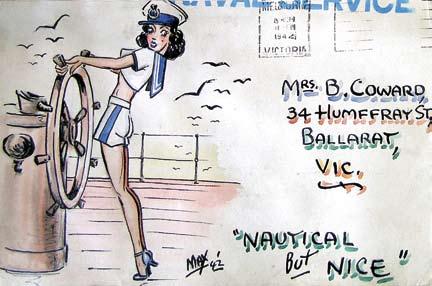
Not only are they visually stunning, they perfectly capture the larrikinism so central to the Australian serviceman legend
and trained conservators, and need to engage a conservation consultant. The remoteness of many regional institutions is another challenge: objects must either be couriered to the consultant using specialist freight carriers or the conservator must travel to the regional location. Either way, significant expenses are incurred.
ANMM conservation manager Jonathan London is sympathetic to the challenges faced by regional and remote institutions in maintaining best practice standards. He recommends a ‘prevention rather than cure’ strategy. ‘Although it can be necessary to treat individual objects requiring immediate attention to ensure their long-term survival, a holistic approach to the preventative care of an entire collection is more cost-effective,’ he tells us. This can be achieved by undertaking a survey and developing a conservation management plan to assess the entire collection, its environmental and storage conditions, and the handling and display methodologies used. The conservator can then make recommendations on improving these aspects, as well as suggesting building improvements and integrated pest management strategies. MMAPSS strongly supports this approach and encourages applications for projects focusing on preventative care.
left and opposite left: images from the Max Coward Collection, courtesy Frank Partridge vc Military Museum
Si GNALS 90 M ARCH T o M AY 2010 10
opposite right: Skeleton of old Tom at the Eden Killer Whale Museum, courtesy of the museum


Conservation projects funded in 2009–10
Frank Partridge VC Military Museum
$7,700
Able Seaman Max Coward was attached to the Naval Intelligence Division during World War II. He was a highly accomplished professional cartoonist and illustrator and produced stories and illustrations for the naval newspaper Dit, the wartime souvenir publications Christmas Annual and HMAS MK IV, and the army educational journal Salt
The Max Coward Collection includes hundreds of wonderful, original drawings, cartoons and illustrations including his own intimate correspondence. These irreplaceable artworks depict life in the Australian navy during WWII in a unique and deeply personal, yet highly accessible, way. Not only are they visually stunning, they perfectly capture the larrikinism that is so central to the Australian serviceman legend, portraying mateship and patriotism with a lightheartedness that surprises and delights the viewer. The grant funds a preservation-needs survey conducted by Preservation Australia, and development of a recommended conservation treatment for this outstanding collection.
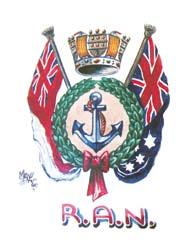
Eden Killer Whale Museum
$3,000
A unique relationship once existed between the Davidson Whaling Station crews operating out of Twofold Bay and the local orca population. The killer whales would herd other whale species into the bay, and the crews would row out to complete the job. The bounty was shared: the orcas consumed the offal. This phenomenon was first documented in the 1840s and continued for the next century. It is believed the traditional landowners, the Yuin people, taught the whalers how to work this way. ‘Old Tom’ was the leader of a pod of killer whales, easily recognisable by his distinctive dorsal fin and well-known for his outgoing personality. When his carcass was washed ashore in 1930, local entrepreneur John Logan insisted the skeleton be preserved as a reminder of this unique relationship and rallied community support.
The museum opened in 1938.
Fifty-one handwritten letters from the Mary Mitchell Collection dating from 1854 to 1859 record the business operations of Eden whaling entrepreneurs, including the Welling family, Alexander Walker Davidson, Solomon (Saul) Solomon and David Bell, as well as Tasmanian whale-boat makers. The correspondence also documents the fierce competition between whalers of the day, and contains the only example of a commercial agreement between whalers of the time.
The project is to conserve a significant photograph of ‘Old Tom’ taken in 1908 by Charles Eden Welling and donated to the museum by John Logan in 1937, and letters from the Mary Mitchell Collection.
The killer whales would herd other whales into the bay, the whaling crews would row out to complete the job, and the two groups would share the bounty
Illawarra Historical Society Inc
$3,500
In May 1861 the clipper Queen of Nations was wrecked on Corrimal Beach with a cargo that included thousands of bottles of cognac and wine. On her voyage out from London, her master Captain Samuel Bache and his first mate were reportedly ‘hopelessly drunk’ for the entire voyage. As the ship broke up and cargo washed ashore, crowds flocked in for what may be history’s wildest beach party! The grant funds conservation, including desalination, for the ship’s deadeyes, retrieved from the seabed in 1937 and donated to the Society in the 1960s.
Coffs Harbour Regional Museum
$4,250
When well-known shipbuilder and founder of the Balmain and Manly ferry lines John Korff took shelter from a storm in 1847, he called his refuge Korffs Harbour, a name that endured until it was mistakenly recorded as Coffs Habour by the crown surveyor in 1861. The grant will pay for a qualified conservator to carry out stabilisation of the museum’s extremely rare and significant items related to Korff.
Kangaroo Island Branch of the National Trust SA (Hope Cottage Museum)
$2,945
Built to a Chance Brothers design in 1872, Cape Willoughby Lighthouse was at the forefront of technology for its time. Positioned at Tiparra Reef until 1923, it was the first to illuminate the dangerous Backstairs Passage – a deep and rough channel between Kangaroo Island and the mainland. It was salvaged and rebuilt at Hope Cottage by the Kangaroo Island Branch when lighthouses were automated. The grant contributes to its refurbishment.
Si GNALS 90 M ARCH T o M AY 2010 11
A rare surviving example of a once common Sydney Harbour ferry type
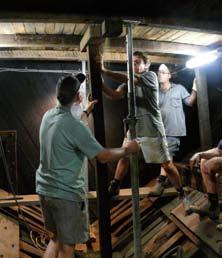
Clyde River & Bateman’s Bay Historical Society Inc
$3,080
The sea trunk of Lieutenant (later Captain) Robert Johnston, Royal Navy, commanding government schooner Snapper, will receive vital conservation treatment. The trunk is significant as the personal property of a noted maritime voyager who in 1821–22 named geographical points in the Bateman’s Bay area while exploring in the company of Messrs Mitchell and Berry.
Richmond River Historical Society
$10,000
The funding will allow conservation treatment and stabilisation of eight paintings portraying the rich history of maritime commerce in the Northern Rivers region of NSW, including vessels Tomki, Brittania, Wollongbar, Lady Franklin, ST Protector and SS Lismore
The collection includes an important work by Arthur J W Burgess, later official marine artist for the Commonwealth of Australia.
Clarence Valley Council
$5,000
The grant will fund a conservation plan for the preservation and restoration of the historic CSR Cane Punt. This former cane barge worked the Clarence River and is typical of vessels once vital to the industry of the area. The punt symbolises the historical importance of river transport for the Maclean district and has considerable potential as an interpretive and educational display.
Glenelg Shire Council Cultural Collection
$4,800
Portland’s historic lifeboat is registered on the Australian Register of Historic Vessels (ARHV 000273) and is the sister vessel of the Port Fairy lifeboat. An early example of a self-bailing and self-righting lifeboat, it played a pivotal role in the rescue of 19 survivors from the wreck of the Admella in August 1859. The grant will fund a specialist assessment and recommendation report for its conservation, restoration and care.
Lady Denman Heritage Complex
Huskisson Inc
$4,745
A rare surviving example of a once common Sydney Harbour ferry type, the Lady Denman is listed on both the Australian Register of Heritage Vessels (ARHV 000021) and the NSW Heritage Register. Designed by innovative naval architect Walter Reeks and built in Huskisson in 1911 by Joseph Dent for the Balmain New Ferry Co. Ltd, the ferry is named after the then Governor General’s wife. The funding is for remedial works in time for her centenary celebrations.
Maritime Museum of Tasmania
$4,210
The Historic Hull Digital Database project will digitally preserve the hull structure of historic vessels – even if the vessel has not survived! The resulting 3D models, lines plans, photos and historical information will be accessible on the museum’s website and also linked to the Australian Register of Historic Vessels. The grant assists with the survey of an initial 22 historic vessels.
Mid-North Coast Maritime Museum
Port Macquarie
$4,315
This contributes to an upgrade of storage facilities at the Pilot Cottage Museum in Port Macquarie, based on recommendations in a preservation survey report prepared by ANMM head of conservation Jonathan London. As recipient of an ANMM internship, museum volunteer Des Neil will apply his training to ensure best practice methods are applied.
Queenscliffe Maritime Museum Inc.
$5,269
This is for purchase of archival storage and labelling materials for the museum’s Archival Repository. Several thousand paper-based items await classification, cataloguing and storage, including the original Victorian Coastal Survey charts, associated reports, journals, marine charts, maps and photographs. Museum volunteer Jennifer Gilbert will apply skills gained during a two-week ANMM internship to managing this material.
Whyalla Maritime Museum
$7,109
The 1941 corvette HMAS Whyalla was the first vessel built at Whyalla BHP shipyards and is one of only two Australian-built WWII vessels of its class in the country. Listed on the Australian Register of Historic Vessels, her war service includes hunting for Japanese midget submarines in Sydney Harbour during the 31 May 1942 attacks. The grant provides for inspection, conservation and restoration of her lifeboat, exposed to extreme weather and heavy industrial pollution from nearby steelworks.
left: Bob Clegg, Rick Wood, Nathan Murrihy working on the Lady Denman. Photograph courtesy of the Lady Denman Maritime Museum opposite: 2009/10 intern Des Neil from the MidNorth Coast Maritime Museum, Port Macquarie. Photographer M Campbell/ANMM
Si GNALS 90 M ARCH T o M AY 2010 12
Preservation projects funded in 2009–10
Mannum Dock Museum of River History
$6,105
All Steamed Up is a proposed children’s exhibition based on historic paddle steamer Marion, moored alongside the museum. Videotaped oral histories of the crew in action, activity stations, Mp4 and video playbacks, and interactive challenges will provide a better understanding of the vessel’s operations and each crew member’s role. The grant funds designer Peter Templeton and professional historian Geoff Speirs to create a conceptual design.
Mid Murray Lands Local History Group Inc
$4,774
The Murray River Trade – Lock and Ferry Construction and Operation Display interprets the history of Murray River ferries, locks and weirs. Focusing on the construction and operation of Lock and Weir No. 1, built at Blanchetown in 1922, and the four ferries that serviced the region, the collection includes photographs, vintage engines, tools and machinery, wooden patterns and scale models. The grant allows relocation of heavy machinery and equipment and the installation and construction of exhibition furnishings.
South Australian Maritime Museum
$2,500
The museum houses a collection of rare 19th-century ship figureheads assembled by the honorary curator of the Port Adelaide Nautical Museum over 50 years. The Neptune’s Wooden Angels: Researching and digitising the South Australian Maritime Museum’s figurehead collection project will research, document and photograph the collection and package this information online. The frant funds a research fellow to investigate the history, origins, art and myths surrounding these fascinating artefacts.
Surf World Gold Coast Inc
$3,300
Opened in June 2009, this is the northern cousin of Victoria’s successful Surf World Museum at Torquay. The collection includes over 100 surfboards spanning nearly a century, photographic displays, surf movie posters, swimwear, still and moving camera and editing equipment, trophies and rare books. A grant to SurfWorld Ed will develop an innovative education program to enhance interpretation of the collection and raise the profile of this new museum.
Des will apply this knowledge to upgrading his museum’s storage facilities with conservation-grade archival materials

Collection management projects funded in 2009–10
Australia Day Regatta Inc
$3,200
The Australia Day Regatta – originally the Anniversary Day Regatta – was first held on Sydney Harbour on 26 January 1837 to commemorate the founding of the New South Wales colony, and is believed to be the world’s oldest continuous regatta. The grant helps the oral history component of the Committee’s research project to capture and transcribe participants’ experiences and make them available via the State Library of NSW and the ANMM’s Vaughan Evans Library.
‘Runnymede’ National Trust of Australia (Tasmania)
$4,867
Master mariners and shipowners Captains Charles and James Bayley operated a highly successful 19th-century deep-sea whaling business. The beautiful 1838 building ‘Runnymede’ houses an extensive collection of artefacts in their original setting, including scrimshaw items, paintings of vessels from the brothers’ fleet, whaling tools and equipment, navigational instruments and charts, ships furniture and fittings. The funding permits The Runnymede Whaling Logs Project to digitise 12 log books detailing their whaling and trading voyages between 1837 and 1881.
Tacoma Preservation Society
$3,500
Listed on our Australian Register of Historic Vessels, MFV Tacoma established the tuna fishing industry in South Australia, and symbolises the development, and subsequent decline, of the tuna industry hub of Port Lincoln. When gifted to the society, the vessel was accompanied by an extensive collection of records and ephemera documenting its 50-year history. The grant assists with digitisation and archiving this collection.
2009–10 internships at ANMM
Des Neil is a volunteer at the Mid-North Coast Maritime Museum, Port Macquarie. He spent two weeks working with registrars to catalogue and pack a large collection of ilma (Indigenous sculptures by Bardi, WA, artists) and with conservators learning box making and mounting. He studied lighting and labelling with exhibition designers, and visited State Records to view their storage systems. Des will apply this knowledge to upgrading his museum’s storage facilities with conservation-grade archival materials.
Jennifer Gilbert is a volunteer at the Queenscliffe Maritime Museum in Victoria. She will spend two weeks at the ANMM widening her knowledge of display technology including materials, techniques for mounting and displaying items, lighting principles, storage and conservation of paper-based materials. She will apply these skills to managing the material in her museum’s expanding archival repository.
Si GNALS 90 M ARCH T o M AY 2010 13
Meet our council
The museum’s governing body meets four times a year. our council members are all high achievers and leaders in their fields, and contribute their expertise to our strategic directions and policies. Their challenge is to extend the museum’s influence and encourage financial and other support from the wider community.
Members and followers of the Australian National Maritime Museum recognise it as a large, high-profile and very professional organisation, with a wide spectrum of activities and interests. These include collecting, preserving and exhibiting heritage material; research, education and communication; managing a large and complex site and facilities; vessel management; and providing leadership and assistance to a wide network of heritage organisations nationally and internationally.
Have you ever wondered just how such an organisation is run, not just day-to-day but over the longer term, setting its goals and strategies?
This museum is a statutory authority of the Australian Government, within the Environment, Water, Heritage and the Arts portfolio. It is accountable to the people of Australia through the responsible minister, presently the Hon Peter Garrett am mp, and the Parliament. This was all set out in the museum’s enabling legislation, the Australian National Maritime Act 1990. It’s the minister who appoints the museum’s director, presently Mary-Louise Williams,

Chairman
During his distinguished career with the Australian Defence Force, Peter Sinclair AM CSC was the commander of three submarines including first commanding officer of the Collins class submarine. He has subsequently held roles as a director at P& o Ports, general manager with the Skilled Group and is currently the director of the consulting firm Defence Network Services.
and chairman, presently Peter Sinclair, and the non-executive councillors with the exception of one councillor who is always a representative of the Royal Australian Navy. The councillors are selected for their expertise in a variety of fields that include shipping, commerce, administration, law, research, higher education and the arts.
The museum’s legislation tells us that the functions of council ‘are to ensure the proper and efficient performance of the museum and to determine the policy of the museum…’ Effectively this means that they focus on strategic directions and core policies and avoid becoming involved in day-to-day operational decisions. In general it’s expected that their expertise and contacts are made available to benefit the museum in key areas such as finance, sponsorship, planning and development. They have adopted a charter of councillors’ responsibilities and rights. Council has established a number of committees that convene before each council meeting. The committees are Finance & Audit, Major Capital Works, Collections & Exhibitions, Marketing, Programs & Sponsorship and Fleet.
Director
Mary-Louise Williams joined this museum as senior curator in 1988, becoming assistant director a few years later and commencing as director in 2000. She has played a leading role in the development of the museum's vision, its exhibitions and collection virtually from its inception. She has been active in the professional associations of museums and cultural organisations both nationally and internationally.
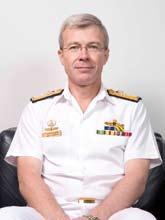
Naval member
The naval career of Rear Admiral Steve Gilmore AM CSC RAN has included command of ANZAC class frigate HMAS Arunta, and he was the Coalition Task Force Commander in the North Arabian Gulf during 2005. He is currently Commander, Navy Systems Command, a Fellow of the Centre for Defence and Strategic Studies and is a Member of the Australian institute of Company Directors.
our chairman Mr Peter Sinclair AM CSC with the museum’s minister the Hon Peter Garrett AM MP and director Mary-Louise Williams. Photographer J Mellefont/ANMM Portraits photographer A Frolows
Si GNALS 90 M ARCH T o M AY 2010 14
Council members
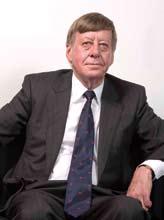
Mr Peter Harvie has a distinguished advertising career. He is currently a director of Austereo Group Limited, Village Roadshow Limited, Art Exhibitions Australia Limited, the Mazda Foundation Limited and the Australian international Cultural Foundation Limited. He was a councillor of the Museum of Victoria.

Ms Robyn Holt is a senior management executive with over 25 years experience in journalism, publishing, cosmetics and fashion, particularly in emerging markets and multicultural environments. She has served on the boards of the Australian Museum and the Taronga and Eastern Plains Zoos, is a published author, award-winning costume designer for film, and won the Centennial Medal for services to business.
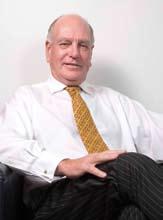
Mr John Rothwell AO is executive chairman and founder of Austal Ships Pty Ltd, a world leader in the construction of aluminium vessels. He is on the advisory committees of Bureau Veritas Asia Region and Det Norske Veritas, and is past chairman of both the Australian Shipbuilders Association and the State Training Board of Western Australia. He is a keen sailor and diver.

Mr Shane Simpson is a solicitor who has specialised in intellectual property, arts, entertainment, media, museums and law related to the new technologies. He was founding director of the Arts Law Centre of Australia and has served on numerous arts boards. Shane was the first chair of Museums and Galleries NSW.

Dr Julia Horne is a published author and historian, currently writing a history of the University of Sydney in her capacity as university historian responsible for its oral history collection, heritage and public history. She has worked in both country and city museums including the Powerhouse Museum, and is a councillor of the Royal Australian Historical Society.

Ms Ann Sherry AO is the CEo of Carnival Australia, a division of the world’s largest cruise ship operator. She was CEo and group executive of Westpac NZ, first assistant secretary of the Prime Minister’s o ffice of the Status of Women, and represented Australia at the UN forum on human rights and women’s rights. She won a Centenary Medal for her work with indigenous and disadvantaged communities.
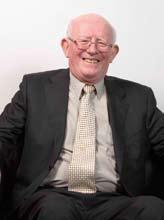
Emeritus Professor John Penrose Ass App Sc PhD was the founding director of Curtin University's Centre for Marine Science and Technology and is now project manager for the National Coastal Water Habitat Mapping Program. An active diver and sailor, he is an honorary associate of the Western Australian Museum, a trustee of the HMAS Sydney Foundation, a member of the Maritime Archaeology Advisory Committee and the WA Marine Parks and Reserves Authority.

Mr Neville Stevens AO has had a distinguished public service career and was secretary of the industry Department, and of the Department of Communications, information Technology and the Arts. He is chairman of Australia's information and Communications Technology Centre of Excellence, chairman of Communications Alliance and AC3, and serves on the advisory committee for the ARC Centre of Excellence in Complex Systems.
Si GNALS 90 M ARCH T o M AY 2010 15
Silver Cloud III
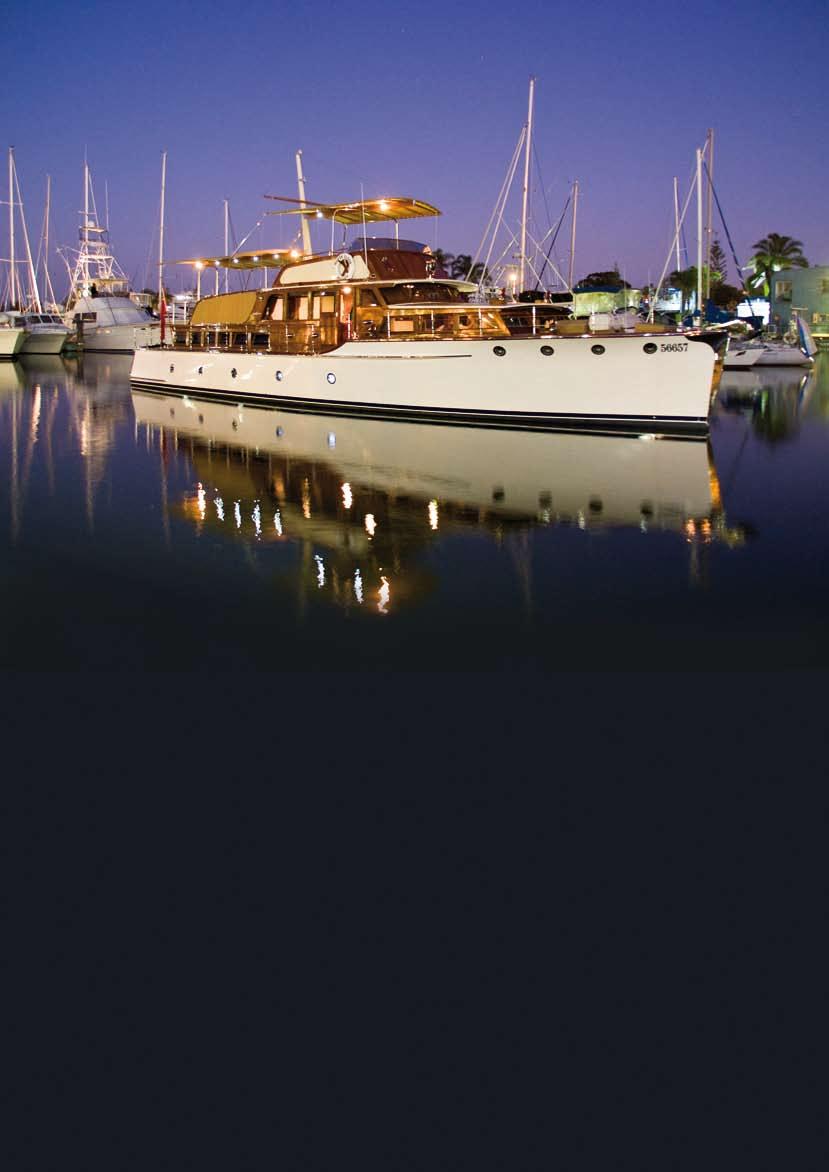
Museum Members are invited to attend the relaunching of this recently refitted, classic Halvorsen cruiser (see program page 23). Her pedigree and her standing as a treasured Australian heritage icon are explained by Halvorsen connoisseur Tony MacKay.
Si GNALS 90 M ARCH T o M AY 2010 16
There are very few classic boats in Australia that have been more admired than the graceful Halvorsen bridge-deck cruiser Silver Cloud III. For over 70 years she has been a valued part of the Sydney scene, the dream boat of many. Now, after a massive renovation over the last four years, this Silver Cloud resumes her place as the ‘grande dame’ of classic boating.
The Halvorsen family needs little introduction to the Australian public. Patriarch Halvor Andersen built his first boat in Norway in 1887 and then taught his youngest son Lars the secrets of quality boatbuilding. Lars honed his skills during a two-year stint in America, then tried his luck in South Africa before destiny brought him and his family to Sydney in 1924. Here he quickly established a reputation for building superior-quality cruisers and race-winning yachts, ably assisted by his five young sons Harold, Carl, Bjarne, Magnus and Trygve. Between them – and aided too by Lars’s wife and two daughters – they established the Halvorsen brand as the finest timber boats in Australia.
Lars’s first Sydney commission was a 30-foot (9.1-metre) yacht begun in 1924, followed by a variety of small craft of every description. Widespread fame came with the launch of Halvorsen Australian job number 65, the splendid 75-foot (22.86-metre) Miramar II in 1930, paving the way for more fine cruisers of a standard rarely seen on Australian waterways. By 1933 eldest son Harold was at the drawing board and an order for a 40' cruiser for J A S Bruce Esq, founder of the Commonwealth Film Laboratories, was approved and under construction. This was the first of three Silver Clouds built for Jack Bruce; the second, a 50-footer, was delivered in March 1936. Lars died prematurely that year and the family formed the company Lars Halvorsen Sons Pty Ltd with Harold, then 26, as managing director. Such were the skills and talents of Harold and his brothers that their order book never faltered. Percy Christmas, managing director of Woolworths, ordered the
opposite: The recent stem-to-stern refit maintains fidelity to the classic Halvorsen lines rather than restoring it to ‘concourse’ originality.
Photographs of the refurbished Silver Cloud by Mike Perrott, reproduced courtesy of Robert and Lee Hunter
below: Silver Cloud III on Sydney Harbour some time after her launch in 1939. Lars and Harold Halvorsen collection, Australian National Maritime Museum bottom: HMAS Silver Cloud Naval ship No 52 patrols Sydney Harbour during World War 2, circa 1941. Australian War Memorial photograph 301992
There were very few privately owned boats of this calibre
in those days and her entrance into any bay would have caused quite a sensation
62' Winbah followed by the 55' Toomeree Other prestigious cruisers followed, such as Silver Arrow, Seamist, Mirrob and Norlen. Jack Bruce’s third commission, the magnificent bridge-deck luxury cruiser Silver Cloud III, job number 209, began on 27 May 1938.
The bridge-deck style, with a partially raised flying bridge aft of the saloon cabin and above the aft cabins, was a popular ‘cold-climate’ layout that allowed entertaining to be carried out either in the saloon or on the bridge deck. (The nowpopular aft-cockpit style, raised-deck cruisers did not gain prominence until the late 1950s and 60s.) Harold Halvorsen had a particular flair for the bridge-deck type of boat and his creations are extremely pleasing to admire, with varnished cabin sides, custom-made fittings, laid decks and French-polished interiors.

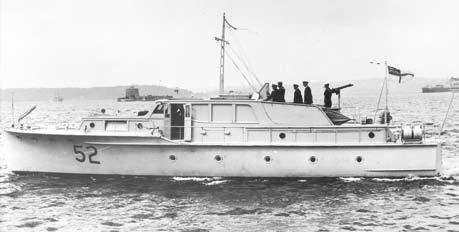
Si GNALS 90 M ARCH T o M AY 2010 17

At 65 feet (19.81 metres), the round-bilge, carvel-planked Silver Cloud III was destined for fame and prestige. There were very few privately owned boats of this calibre in those days and her entrance into any bay would have caused quite a sensation. Launched in 1939, one of her first voyages was to the Great Barrier Reef where she had been chartered by an American publisher, Cleveland Putnam, for his honeymoon cruise. Magnus Halvorsen, then 21, joined the crew for his first deep-sea voyage, the trip to Gladstone in Queensland and back covering over 2,500 miles. Powering this voyage were twin six-cylinder Buda petrol engines with reduction gears, made in Chicago and delivering 110 horsepower at 2,000 rpm. Top speed was approximately 12 knots.
The outbreak of war and the threat of Japanese attack saw all pleasure boats above 40 feet (12.2 metres) requisitioned for military duties, and many of them were the glamorous Halvorsens. Painted grey and fitted with a Vickers machine gun and depth-charge racks, HMAS Silver Cloud Naval ship No 52 joined Seamist, Winbah, Steady Hour II, Toomeree and others in what became known as the ‘Hollywood Fleet’. Despite the slightly derisive title, these cruisers served as channel patrol boats at various ports and during the night of 31 May 1942 when three Japanese midget submarines attacked Sydney Harbour, several Halvorsens saw active duty. Toomeree
was assigned to watch the harbour boom. Seamist spotted a submarine and was joined by Steady Hour II in launching depth charges. HMAS Silver Cloud was later transferred to assist with guarding Port Kembla and served with distinction.
After the war Silver Cloud III was tied up at HMAS Penguin at Balmoral in Sydney awaiting her return to Jack Bruce when she was gutted by fire.
The Halvorsens bought her back for £700, and she was rebuilt at their Ryde factory. As a concession to her history they left a number of the charred frames in place as a reminder of her near-destruction.
The cruiser was then sold to Stan Oldfield who sold her, after just a year, to Norman Hannan. Moored at the Royal Motor Yacht Club at Rose Bay, Silver Cloud was back in her element as a jewel of the harbour, maintained by a fastidious owner during an 11-year period. Coastal trips and harbour cruises placed her back in the forefront of prestige boating and it was not until 1967 that, in this writer’s opinion, the Halvorsens built a boat to equal her with another 65-footer, Kanahoee
Norman Hannan sold Silver Cloud to Bob Ibbotson during the 1950s for £10,000, and she became the flagship of the St George Motor Boat Club.
A visitor to one of the Australian National Maritime Museum’s recent Classic & Wooden Boat Festivals told a story, from this period of the vessel’s life,
Painted grey and fitted with a Vickers machine gun and depth charge racks, Silver Cloud joined what came to be known as the ‘Hollywood Fleet’
of 16 nuns who sat in full regalia with their legs over the side as Silver Cloud cruised the harbour. Over the years people had found his story hard to believe and wrote it off, he told us, as a work of his imagination. Fortunately, the original guest book from the 1950s had been preserved and we were able to confirm the nuns’ visit to Silver Cloud III Our informant was thrilled to have his anecdote verified in this way.
In 1974 the Hon Dr Derek Freeman and family acquired Silver Cloud III and she returned to the Royal Motor Yacht Club at Rose Bay. Dr Freeman was a Member of the NSW Legislative Council from 1971 to 1984. The Freeman family still retains a huge affection for Silver Cloud, which transported them up and down the east coast on many holidays and excursions. This was possibly the vessel’s
Si GNALS 90 M ARCH T o M AY 2010 18

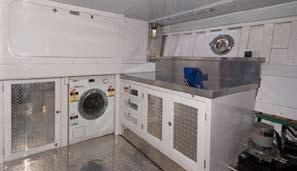
period of greatest exposure, coinciding with the enormous popularity of the Halvorsen hire cruisers based on the Hawkesbury. Silver Cloud was generally viewed with reverence; her sleek lines and charismatic appearance added an air of mystery to her charm. Mrs Freeman, it was noted, drove a Rolls Royce Silver Cloud, surely the perfect accessory for the family’s superb boat!
Dr Freeman made several significant alterations including a large flying bridge above the main saloon, which opened up the bridge deck for entertaining and greatly increased the outdoor area. The original plumb stem was altered to a raked bow. Purists may not have been thrilled, yet the styling was undiminished. Both of these modifications have been retained in the latest refit. At some stage during the intervening years, the venerable Buda petrol engines were replaced with twin MWM diesels of 110 hp; the performance remained unaltered though reliability was improved.
In 1991, the Sydney Morning Herald published an article featuring Silver Cloud III and Dr Freeman, who was quoted pondering how many Halvorsens were still afloat. This article led to the first rally of Halvorsens in Darling Harbour in October 1991, and the subsequent formation of the flourishing Halvorsen Club which now boasts over 130 members. It was largely through Derek Freeman’s efforts that the
opposite and left: Prestige and comfort were hallmarks of Silver Cloud’s fitouts during the course of her 70-year life afloat; successive owners applied the stamp of their own standards and style.
below: An engine room so immaculate you could dine in it (while doing the laundry).
Halvorsen at ANMM
Inspect Silver Cloud III and attend her relaunch by Rear Admiral Peter Sinclair AC AO RAN (Rtd) (former NSW Governor)
6.15–8 pm Friday 19 March at the museum. Details and booking information page 23.
The Australian National Maritime Museum holds the Lars and Harold Halvorsen Collection of plans, photographs and boatbuilding tools, donated by Harvey Halvorsen (son of Harold, grandson of Lars) in 2002 and augmented by subsequent donations from Harold’s brothers Carl, Trygve and Magnus Halvorsen. in 2004 the museum was co-publisher of Wooden Boats, Iron Men – The Halvorsen Story by family member Randi Svensen, now in its third re-printing. our 2006 exhibition Dreamboats & Workboats told this story, illustrated by the collections and further loans from family members. Halvorsen vessels are prominent at each of the museum’s Classic & Wooden Boat Festivals (the next one scheduled for 16–17 october 2010).
Halvorsen cruisers were recognised as heritage classics, and became sought after by serious and discerning collectors.
In 1994 the Freemans sold Silver Cloud III to Gary Rothwell, purchasing the 1967-launched, 65' Kanahoee in her place. During 1995 Silver Cloud underwent many improvements at the hands of a full-time shipwright, including an interior refit and two new Cummins six-cylinder diesels. The vessel has always had a quite distinctive exhaust note, once heard, never forgotten … this signature sound did not disappear with the new engines, and today the glorious crackle from her exhausts can still be enjoyed.
Moored in Neutral Bay just near her original launching site, Silver Cloud was used extensively on Sydney Harbour and Pittwater. She featured in the 2004 Peter Bogdanovich movie The Mystery of Natalie Wood, starring as the family yacht Splendour from which the actress, wife of Robert Wagner, fell overboard and drowned in 1981. And a thing of splendour Silver Cloud certainly is.
Her current owners Robert and Lee Hunter gained custody in late 2005 and she motored to Port Macquarie where a refit on a major scale has been carried out. Like many such refits its scope expanded dramatically to replace deteriorated timbers and completely refasten hull and decks, and virtually all the engineering has been replaced. With new yet sympathetic interior furniture, and with
paint, bright work and decks restored to Bristol condition, Silver Cloud is again poised to put the glamour back into Australian boating.
Thankfully, appreciative owners like the Hunters can see the irreplaceable value in historic cruisers and are prepared to put their heart and soul into such renovations. In a celebration of Harold Halvorsen’s skill as a designer, the family’s reputation as builders, and the passion of dedicated owners, Silver Cloud III takes her rightful position rebirthed as a true Australian classic.
Tony MacKay was the second commodore of the Halvorsen Club and has been custodian of numerous classic Halvorsen cruisers ranging from the 1960 24-foot (7.3-metre) Sea Skiff Gypsy to the 1973 Palmyra (ex-Coolong), a 48-foot (14.63-metre) flybridge cruiser. His largest Halvorsen was the 65’ former Kanahoee mentioned in the text, now in the care of museum chairman Peter Sinclair’s sister Kay. Asked about his devotion to these craft, Tony explains: ‘The allure of the classic Halvorsen is the unique combination of style and performance, varnish and chrome and the craftsmanship which seems lost in our modern age. As a piece of machinery, they rarely disappoint. As a hobby, they are completely fulfilling, and as an entertainment platform they never fail to induce family, friends and guests into a state of complete relaxation. Can recreational boating get any better? Not for me.’
Si GNALS 90 M ARCH T o M AY 2010 19

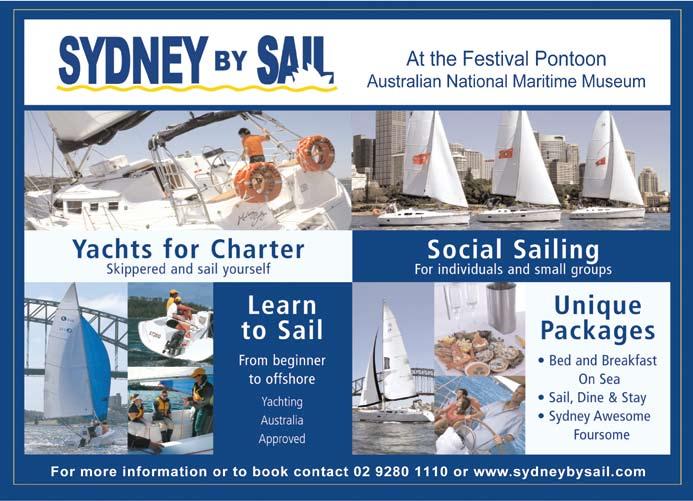
*Valid until the end of Feb 2010. Exclusive to Signals members only. Subject to availability and conditions apply. Based on twin share accommodation. RH912 THE SPECIAL ESCAPE HOLIDAY IS BACK BY POPULAR DEMAND. At Novotel Rockford Darling Harbour you can relax and unwind in one of our Standard Rooms and enjoy FREE full buffet breakfast. We are at the heart of vibrant Darling Harbour and conveniently located near... well... everything. Reservations 1800 606 761 sydney@rockfordhotels.com.au Proud supporter of the Australian National Maritime Museum $179* per room inc breakfast from Designed for natural living www.rockfordhotels.com.au Si GNALS 90 M ARCH T o M AY 2010 20
Members
News
Members met Professor John Gascoigne (UNSW History Department), winner of the 2009 Frank Broeze Memorial Maritime History Book Prize administered by the museum and the Australian Association for Maritime History. Professor Gascoigne was a guest lecturer at an event that featured the museum’s latest acquisition, the ‘omai Relics’ – three Pacific artefacts collected on James Cook’s second circumnavigation.
Photographer J Mellefont/ANMM

The Tall Ships Race has become a highlight among the harbour festivities on Australia Day. This popular Members event was booked out with our guests taking up all the places on Endeavour They were rewarded with ideal conditions, on-board entertainment and becoming the focus of everyone’s attention during the event.
ANMM photographs
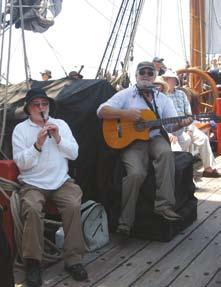
Get out on the water with us
A special welcome to all those new Members who joined up over recent months – there was a substantial jump in numbers over the summer holidays – and of course welcome back to all of you who renewed your Memberships. There is a great program coming up this year and I look forward to welcoming you on your visits to the museum. We love getting your feedback so I encourage you to contact us here at the office if you have any thoughts or suggestions for us.
on the exhibition front we are excited about the great response to Mythic Creatures: Dragons, Unicorns & Mermaids, which continues to attract crowds of people to the museum. it’s given us one of our busiest summers in many years, and it runs until 23 May. There are many more stimulating events that relate to this exhibition scheduled over autumn, so do check them out overleaf and on our website. While you’re there you can select the best of the season’s lectures, tours and events that take you out on the water. in this edition of Signals you can learn even more about some of these attractions before coming along to enjoy them in person – read about the classic Halvorsen cruiser Silver Cloud III (page 16) and the wonderful old Torres Strait pearling lugger Tribal Warrior (page32).
Coming up in this quarter are two new photographic exhibitions to enjoy. Wrecks, reefs and the Mermaid showcases the outstanding recent work of our maritime archaeologists making discoveries in tropical waters – their latest finds are detailed in the opening pages of Signals David Moore – portraits of a shipping company features the work of this world-renowned Australian photographer. Later this year we’ll unveil Quest for the South Magnetic Pole from the South Australian Maritime Museum and Sons of Sindbad – the photographs of Alan Villiers from the collection of the National Maritime Museum in Greenwich, UK.
Two absences to note in your diaries if you’re coming in during April: destroyer HMAS Vampire goes into dry-dock at Garden island for maintenance – Members can book to see her high and dry – while HM Bark Endeavour will be off voyaging for much of that month.
As Members you can go out sailing on other of our historic fleet vessels when they are operated as part of the fleet maintenance program – including the 1888 racing cutter Akarana, first Sydney-Hobart race veteran Kathleen Gillett and RAN patrol boat Advance. We are taking expressions of interest for outings on these and our other historic vessels, free of charge. Simply email members@anmm.gov.au or call the Members office and we will do our best to get you on the water (on a first-come basis).
Adrian Adam, Members manager

Si GNALS 90 M ARCH T o M AY 2010 21
Members events
Calendar Autumn 2010
Friday 5 Lunchtime talk and tour: Mythic Creatures
Sunday 7 On the water: QMII welcome sunset cruise
Wednesday 10 Tour preview: The floating world of Cambodia
Thursday 11 Lecture: 8th Phil Renouf Memorial Lecture
Friday 19 Special: Relaunch of Halvorsen Silver Cloud III
Sunday 21 Talk: Phoenix rising: Mythology in art
Sunday 28 Talk: Maps, myths and monsters April
Wednesday 7 On the water: Tribal Warrior harbour cruise
Fri 9–Sat 10 For kids: Mythic museum sleepover
Tue 13–Thu 15 Special: 1950s creature features on Vampire
Wednesday 21 Talk: Wreck Reef, the Cato and HMS Porpoise
Thursday 29 Tour: Garden island naval heritage tour May
Thursday 6 On the water: Autumn leaves cruise & Goat island tour
Sunday 16 Talk: Mythic ships: Cerberus, Pandora & Centaur
Friday 21 Tour: Wharf 7 collection behind-the-scenes
Friday 21 Talk and tour: Mythic Creatures farewell
How to book
it only takes a phone call to book for these Members events … have a credit card ready and we can take care of payments on the spot.
• To reserve tickets contact the Members office: phone 02 9298 3644 (business hours) or email members@anmm.gov.au Bookings strictly in order of receipt.
• If phoning, have credit card details handy.
• If paying by mail after making a reservation, please include a completed booking form with a cheque made out to the Australian National Maritime Museum.
• The booking form is on reverse of the address sheet with your Signals mailout.
• If payment is not received seven days before the event your booking may be cancelled.
Booked out?
We always try to repeat the event in another program. Cancellations if you can’t attend a booked event, please notify us at least five days before the function for a refund. otherwise, we regret a refund cannot be made. Events and dates are

Lunchtime talk and tour
Mythic Creatures: Dragons, Unicorns & Mermaids
12 noon–1.30 pm Friday 5 March at the museum
Enjoy a tour of our Mythic Creatures exhibition with a museum curator. See larger-than-life models of a dragon, a unicorn, a swooping giant Roc and an enormous multi-tentacled sea-monster. View life-size recreations of extinct beasts that might have inspired tales of strange and fantastic mythical creatures. our curator will speak about the Australian National Maritime Museum’s collaboration with leading North American cultural organisations, led by the American Museum of Natural History, New York, to create this world-touring exhibition.
Members $10, general $15. includes light lunch and Coral Sea wine
BOOKINGS AND ENQUIRIES
Booking form on reverse of mailing address sheet: phone 02 9298 3644 fax 02 9298 3660 (unless otherwise indicated). All details are correct at time of publication but subject to change.
Parking Wilson Parking offers Members discount parking at nearby Harbourside Carpark, Murray Street, Darling Harbour. To obtain a discount, you
correct at the time of printing but these may vary … if so, we’ll be sure to inform you.
must have your ticket validated at the museum ticket desk.
March
Mythic Creatures exhibition
Si GNALS 90 M ARCH T o M AY 2010 22

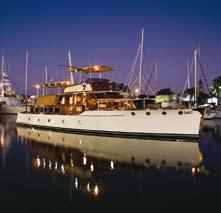

on the water
Queen Mary II welcome champagne sunset cruise
4–7 pm Sunday 7 March on the harbour
Get up close to one of the largest and most famous of the Cunard ships! Enjoy refreshments on MV Regal as we welcome the Queen Mary II for her short stay in Sydney and take in all the harbour sights as sunset approaches.
Members: $40, child $25. General $50, child $30. Champagne and refreshments served on board. Meet at Pyrmont Wharf next to the museum
8th Phil Renouf Memorial Lecture Young men mucking about in old boats
6.15–8.30 pm Thursday 11 March at the museum
The museum and Sydney Heritage Fleet again join forces to present the annual lecture in honour of SHF’s late president, Phil Renouf. Speaker Warwick Turner, an SHF founder, was instrumental in saving and restoring the Lady Hopetoun in the 1960s. Warwick has had a lifelong passion for steam vessels and their restoration, in particular the inland paddle-steamers of earlier centuries. He will speak about some of the classic steam vessels that have caught his eye over the years, and the way forward in understanding and preserving our maritime heritage.
ANMM & SHF Members $20, general $25. includes Coral Sea wine and cheese
Special Relaunch of Halvorsen Silver Cloud III
6.15–8 pm Friday 19 March at the museum
The luxury 65-foot bridge-deck cruiser Silver Cloud III was launched in 1939, the third Halvorsen vessel of that name built for J A S (Jack) Bruce Esq. During the war she was commandeered by the navy as a channel patrol boat for Sydney Harbour and Port Kembla. Now after a long and chequered history and numerous owners (see story on page 16) she is ready to be relaunched following another major refit. Her story will be told by representatives of the Halvorsen Club and her current owners, when you can see her dedicated in a special ceremony alongside the museum, by former Governor of NSW Rear Admiral Peter Sinclair AC Ao RAN (Rtd)
Members $25, general $30. includes refreshments and a viewing of the vessel.
Talk
Phoenix rising: Mythology in art
2–3.30 pm Sunday 21 March at the museum
Centaurs, cyclopes and gorgons are just some of the unearthly monsters that have fought humans in epic mythical battles and have been depicted in some of the world’s greatest paintings. Art and religious studies expert Dr Chris Hartney looks at some of the classic paintings of bygone times that have portrayed mythical creatures and explores the myths behind these images. Afterwards, take a tour of the Mythic Creatures exhibition.
Members $15, general $20. includes Coral Sea wine and cheese
Talk
Maps, myths and monsters
2–3.30 pm Sunday 28 March at the museum
Before adventurers and scientists explored the seven seas, some of the biggest myths of all portrayed what lay beyond the edge of the known world. Early maps depicted not only geographical elements of the known world but also what was believed to be the unknown world. Maps in the middle ages were encyclopaedias of knowledge encompassing cardinal directions, fauna, flora, exotic races, myths and monsters. Join map enthusiast Professor Robert Clancy for an enlightening talk on mystery, miscalculation and myth in cartography.
Members $15, general $20. includes Coral Sea wine and cheese
EMAIL BULLETINS
Have you subscribed to our email bulletins yet?
Email your address to members@ anmm.gov.au to ensure that you’ll always be advised of activities organised at short notice in response to special opportunities.
right: David Lovett centre: Mike Perrott far right: courtesy Strachan and Vivian Donnelley
Phil Renouf 1928–2002
Halvorsen bridge-deck cruiser Silver Cloud III
Mythic creatures on maps
Si GNALS 90 M ARCH T o M AY 2010 23
Members events
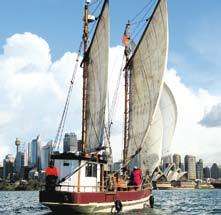


on the water
Tribal Warrior harbour cruise 10 am–12 noon or 12.30–2.30 pm
Wednesday 7 April on the harbour
Built as Mina around the turn of the 20th century, the one-time Torres Strait pearling lugger Tribal Warrior could be Australia’s oldest working boat. This 15.4-metre gaff-rigged ketch was restored by the Tribal Warrior Association, circumnavigated Australia in 2002–03 and is part of its indigenous Maritime Training Program. Sail on board this unique piece of our maritime history, learn about its role in training young indigenous people, hear some amazing stories you’ve never heard before about such familiar harbour landmarks as Bennelong Point, Garden and Clarke islands.
Members $30, general $40 (must be reasonably fit and agile). includes refreshments and commentary on board. Meet at the Heritage Pontoon next to submarine Onslow.
For kids
Mythic museum sleepover: Where the wild things roam!
6.30 pm–9 am
Friday 9–Saturday 10 April at the museum
Dress as a dragon, unicorn, mermaid or mythical monster for a wild overnight rumpus at the museum! See mythical creatures come to life on a torchlight tour through the Mythic Creatures exhibition. Experience magic, potions, drumming workshop, and a mythic film, plus a sleepover in a museum gallery next to the historic Tasman Light.
Ages 5–12 (must be accompanied by an adult). Members $85, general $100. includes dinner and BBQ breakfast.
Special
1950s creature features on HMAS Vampire
6.30 pm Tuesday 13–Thursday 15 April
Join us for a season of spine-chilling terror, horror and suspense on board HMAS Vampire!
Tuesday 13 April:
Creature from the Black Lagoon
Wednesday 14 April: Abbott and Costello meet the Mummy
Thursday 15 April: It came from beneath the Sea
Talk
Wreck Reef and the story of the Cato and HMS Porpoise
6.15–7.30 pm Wednesday 21 April at the museum
British armed cargo ship Cato and HMS Porpoise, a Royal Navy sloop carrying Matthew Flinders, were both wrecked on a remote coral reef 450 miles off the Queensland coast on 17 August 1803. in 2009 museum and special expedition divers discovered the remains of the Cato. Hear project leader and ANMM maritime archaeologist Kieran Hosty tell the dramatic story of these shipwrecks, and see images and video of the wreck site and artefacts on the ocean floor.
Members $15, general $20. includes Coral Sea wine and cheese
Tour
Garden Island naval heritage tour
10 am–1.30 pm Thursday 29 April at Garden Island
BOOKINGS AND ENQUIRIES
Booking form on reverse of mailing address sheet:
phone 02 9298 3644
fax 02 9298 3660
(unless otherwise indicated).
All details are correct at time of publication but subject to change.
Members: adult $12, child $8. General: adult $15, child $10.
Enjoy a behind-the-scenes guided tour of Garden island heritage precinct with representatives of The Naval Historical Society of Australia. The tour will visit areas within the secure precinct, including the Kuttabul Memorial, the chapel, and heritage buildings such as the original boatshed and the top of the Captain Cook Dock. You will then be able to take a self-guided tour of the RAN Heritage Centre.
Members $25, general $30. includes guided tour, entry to RAN Heritage Centre, morning tea. Requires some walking and climbing stairs. Catch the 10.10 am Watsons Bay ferry from Circular Quay to Garden island.
Former pearling lugger Tribal Warrior
Mythic creatures costumes
Wreck Reef’s perfect diving conditions far left: Jonathan Bogais centre: A
Frolows/ANMM left:
Xanthe
Rivett
Si GNALS 90 M ARCH T o M AY 2010 24

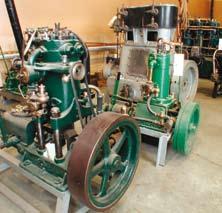

on the water
Autumn leaves annual garden cruise and Goat Island tour
10 am–2.30 pm Thursday 6 May on Lane Cove River and Goat Island
Riverside autumn gardens hold many delights, revealed from the decks of historic ferry Lithgow. Adam Woodhams, award-winning gardener, photographer and assistant gardening editor of Better Homes and Gardens magazine, provides expert commentary on this leisurely cruise up the Lane Cove River. Enjoy these glorious gardens at this mellow time of year and pick up some great gardening tips. We’ll stop off at Goat island for a guided tour of this fascinating island with ranger Robert Newton.
Members $65, general $75. includes morning tea on board.
Meet at Pyrmont Wharf next to the museum
Talk
Mythic ships:
Cerberus, Pandora and Centaur
1.30–5.30 pm Sunday 16 May at the museum
originating from classical mythology, the names Cerberus, Pandora and Centaur have become synonymous with Australian maritime tragedies. Hear Australia’s leading authorities on these three shipwrecks: Peter Gesner, Captain John Foley and Dr ian MacLeod.
Members $50, general $60. includes afternoon tea and reception
Tour
Wharf 7 collection behind-the-scenes
11 am–1 pm Friday 21 May at Wharf 7
Go behind-the-scenes in our special Wharf 7 storage areas not open to the public and see where many of the objects from the National Maritime Collection are housed. Hear the stories behind some of the amazing objects and artefacts stored there – some have never been displayed. Learn how our preservation lab operates with ANMM conservation manager Jonathan London, who will show some objects being preserved and prepared for exhibition.
Members only, $15. includes light lunch after the tour. Limited numbers.
Meet in Wharf 7 foyer
Farewell talk and tour
Mythic Creatures:
Dragons, Unicorns & Mermaids
12 noon–1.30 pm Friday 21 May at the museum
Your last chance to view our Mythic Creatures exhibition with a museum curator. See larger-than-life models of a dragon, a unicorn, a swooping giant Roc and an enormous multi-tentacled sea-monster. View life-size recreations of extinct beasts that might have inspired tales of strange and fantastic mythical creatures.
Members $10, general $15. includes light lunch and Coral Sea wine
Tour preview
Cambodia tour preview and illustrated talk
6.30 pm Wednesday 10 March at the museum
Exclusive overseas adventure
The floating world of Cambodia
19 November–5 December 2010
$4,090 per person including airfares
Join us later this year to explore the magnificent temples of Angkor and discover Cambodian maritime traditions – ancient and modern – on the museum’s latest Asian cultural adventure. on this 17-day tour our guests will gain insights into the unique marine environment that supported the great Khmer empire and its unrivalled monuments – including world-renowned Angkor Wat – while experiencing Cambodian life as it’s lived today on its inland waterways and sea coasts. This exclusive tour developed in conjunction with World Expeditions is led by museum staff member and Asian specialist Jeffrey Mellefont, leader of our previous maritime-culture tours of indonesia and southern india.
Price $4,090 includes airfares and airline taxes, twin-share hotel and breakfasts, transfers and transport, entry to sites, guides. Travel insurance, single supplement ($385), Cambodian visa not included in the package price. Detailed trip notes at www.anmm.gov.au/membersevents.
For preview 6.30 pm 10 March 2010 call Members office on 02 9298 3644. For more information and bookings call Kate or Fiona at World Expeditions (02) 8270 8400, toll free 1300 720 000 or email info@worldexpeditions.com.au.
Historic ferry Lithgow
Angkor Wat, Cambodia
right and far right: J Mellefont/ANMM centre: A Frolows/ANMM Si GNALS 90 M ARCH T o M AY 2010 25
Behind the scenes at Wharf 7
Kids events

Autumn school holidays 4–18 April 2010
See the museum’s fleet
Purchase a Big Ticket to see the museum’s fleet and enjoy all children’s daily activities.
Kids on Deck: Mythic Creatures
Children 5–12 years
Hourly sessions 10 am–4 pm daily
Mythic creatures have been brought to life in stories, songs and art around the world. Create some history of your own with exciting dragon, unicorn and mermaid activities in our children’s activity space.
$7 per child or FREE with any purchased ticket. Adults/Members FREE.

Mythic theatre: ‘I, bunyip’
Children 5–12 years
10.30 am, 12 noon & 1.30 pm
Saturday 10, 17 and Sunday 11, 18 April
Meet lizardy Potkooroks, shadowy Turongs, cave-dwelling Nyols and mermaid-like Yawkyawks as we explore the oldest myths and stories across Aboriginal cultures in this interactive family show. in association with Erth.
FREE with Kids on Deck ticket
Youth workshop
Mythic inks: Stencil art workshop
Ages 8–14 years
10 am–1 pm
Tuesday 6 or Wednesday 7 April
Create your own unique stencil artwork to print temporary tattoos, t-shirts and a collaborative mural for display at the museum. Take home a t-shirt printed with your own mythic creature design!
$20, Members $16 (includes t-shirt and stencil). Bookings essential9298 3655
Youth workshop
Mythic dance workshop
Ages 8–14 years
11 am–12.30 pm or 2–3.30 pm
Monday 12 April
Tell stories through contemporary and traditional dance movements.
$10, Members $8 includes a visit to Mythic Creatures exhibition. Bookings essential 9298 3655

Youth workshop
Ani-morph-ation: Flip-book workshop
Ages 8–14 years
10 am–12 noon
Tuesday 13 or Wednesday 14 April
Bring mythic creatures to life and create your own flip-book animation.
$10, Memberes $8. Bookings essential 9298 3655
FREE family movie!
1.30 pm daily during school holidays
Sunday 4–Sunday 11 April Nico the Unicorn
Monday 12–Sunday 18 April Pete’s Dragon
Special group rate
For 10 children or more
$7 per child for a fully organised program of activities that includes:
• all museum exhibitions
• all children’s daily activities
• entry to destroyer HMAS Vampire and submarine HMAS Onslow
• FREE bus parking
• FREE entry for 2 adults per 10 children
Note $4 extra per child for 1874 tall ship James Craig
Bookings essential
Book early to ensure your space!
Phone 02 9298 3655
Fax 02 9298 3660
Email bookings@anmm.gov.au
left: A Frolows/ANMM centre and right D Finnin/AMNH
Mythic Creatures shadow puppet
Mythic Creatures unicorn
Mythic Creatures costumes
Si GNALS 90 M ARCH T o M AY 2010 26

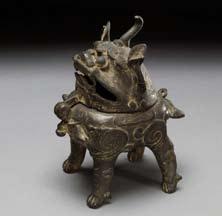
During school term
Family fun Sundays
Hourly sessions
11 am–3 pm every Sunday during term
Kids on Deck: Mythic Creatures
Children 5–12 years
Mythic creatures have been brought to life in stories, songs and art. Create some history of your own with hands-on dragon, unicorn and mermaid activities in our children’s activity space.
$7 per child or FREE with any purchased ticket. Adults/Members FREE
Mini Mariners
Children 2–5 years + carers 10–10.45 am and 11–11.45 am every Tuesday during term
March: Mythic Creatures
Discover a magical world of dragons, unicorns and mermaids
20 & 27 April: Boats on the Harbour
Join the crew as we row, row, row the boat through stormy seas
4 May: Zoomobile visit: Animals of the Dreaming
Meet some living animals that have inspired stories and songs about mythic creatures 11, 18, 25 May: By the Seashore
Make a seaside collage and your own surfboard magnet to take home
$7 per child, 1st adult/Members FREE. Booked playgroups welcome. Bookings essential 9298 3655. Please note this program is not offered during the school holidays and for safety reasons is held inside the museum. For more information visit www.anmm.gov.au
World’s Biggest Playgroup 2010
10 am–2 pm
Monday 22–Wednesday 24 March
Celebrate the joy of playgroups at the museum during National Playgroup Week with lots of free activities for 0–5 yearolds. Wednesday features free concerts by popular entertainers My Friend Mark and Peter Combe set to delight audiences throughout the day (limited places, bookings essential).
Concert tickets will be available online from 12 noon on Monday 22 February. For more information and bookings visit www.playgroupnsw.com.au
Mythical torchlight tour
Children 5–12 years
6–7.30 pm Saturday 24 April
Join Australia’s greatest mystery hunter, Tim the Yowie Man, and use your torch to track down the mythical creatures in our exhibition if you dare!
$20 per child (Member $15).
Bookings essential 9298 3655. Remember your torch!
Introduction to anime workshop
Children 8+ years
10 am–12 noon or 1–3 pm Sunday 2 May
Be inspired to learn how to draw mythic creatures using a choice of watercolours, pencils and oil pastels with professional illustrators.
$25 per child (Member $20).
Bookings essential 9298 3655
Kids events

Fantasy writing masterclass for teenage writers
Ages 12–16 years
4–8 pm Friday 21 May & 9.30 am–6 pm Saturday 22 May
Learn the secrets of fantasy writing with Australia’s leading young adult fiction authors. in association with the Children’s Book Council of Australia.
2-day workshop $120 (Members $100). Bookings essential 9298 3655
FREE family movie!
1.30 pm every Sunday during term
7 March
Creatures Fantastic – Dragons 14 March
Creatures Fantastic – Monsters of the Deep 21 March
Creatures Fantastic – Mythical Horses
28 March
The Loch Ness Monster
25 April
The Loch Ness Monster
All Sundays in May
The Loch Ness Monster
Visit www.anmm.gov.au for full program
BOOKINGS AND ENQUIRIES
For children's programs and activity bookings call 9298 3655
All details are correct at the time of publication but may be subject to change.
Mythic Creatures Qilin incense burner
Mythic Creatures chupacabra
Mythic Creatures interactive
All photographs this page D Finnin/AMNH Si GNALS 90 M ARCH T o M AY 2010 27
What’s on autumn 2010 Events


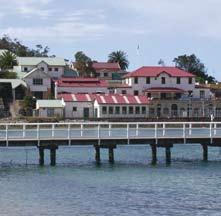
Auslan tour of Mythic Creatures
11 am Sunday 7 March
Join an Auslan (sign language) interpreted tour of our Mythic Creatures: Dragons, Unicorns & Mermaids exhibition.
FREE. Bookings essential: email events@anmm.gov.au text 0419 203 644 or fax 9298 3670
An encounter with Endeavour
5.30–8 pm Wednesday 17 March
Explore the ship accompanied by Endeavour master Ross Mattson who will guide you through the intricacies of steering and navigating this historic vessel. Teacher-guide John Lamzies will describe day-to-day life and historic goings-on in the great cabin. A hot supper will be served below in the Modern Mess Deck.
$25 (Members $20).
Bookings essential 9298 3655
Tour of Mythic Creatures exhibition
10–11.30 am Thursday 25 March
Come and view this extraordinary show with a member of our exhibition team. Featuring life-size models, hands-on interactives, fossils, paintings, textiles and diverse cultural objects from around the world.
FREE. Bookings 9298 3655
Program times and venues are correct at time of going to press. To check programs before your museum visit call 02 9298 3777.
Heritage Week
Viewing: In Cook’s wake
10.30 am–12 noon Thursday 22 April
Pacific explorers opened up the southern oceans – leading to the making of our nation. James Cook’s second and third voyages were on the Resolution. Join curator Dr Nigel Erskine to view the ship’s sternpost and see recently purchased artefacts collected in 1773 during Cook’s second expedition.
FREE. Bookings essential 9298 3655 in association with National Trust Heritage Festival (9–24 April 2010).
1980s mythic flix
7pm Thursday 29, Friday 30 April & Saturday 1 May
Join us for a season of nostalgic mythic flix by the harbour’s edge featuring muppets, mystics and monsters. Thursday: Labyrinth (1986); Friday: The Never-ending Story (1984); Saturday: The Dark Crystal (1982).
Adult $15/child $10 (Members $12/$8). Bookings essential 9298 3644
Exhibition comedy tours
6.30–7.30 pm
Thursday 6, Friday 7 & Saturday 8 May
Join Melbourne comedian and ‘scientician’ Ben McKenzie and his chimera hunters for a side-splitting tour of the Mythic Creatures exhibition. in association with Sydney Comedy Festival. Adult/child $25 (Member $20). Bookings essential 9298 3655
Cruise Forum 2
Sydney Harbour: A playground teeming with life 10 am–2.15 pm Thursday 20 May
Celebrate United Nations international Biodiversity Day by learning about our amazing harbour – one of the most biologically diverse in the world. Board a heritage ferry cruise, picnic at Chowder Bay (Clifton Gardens) and visit the Sydney institute of Marine Science. in association with The Sydney institute of Marine Science. $60 (concession $55). includes cruise and lunch. Bookings essential WEA 9264 2781
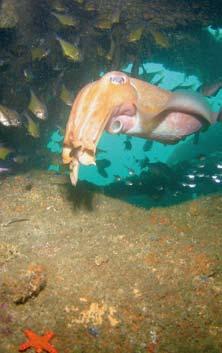 Mythic Pegasus
Harbourside Mythic Flix
Mythic Pegasus
Harbourside Mythic Flix
A Frolows/ANMM
J
below:
Sydney Harbour Chowder Bay far
left: Joe Leonard centre:
left:
Mellefont/ANMM
Stirling Smith
Si GNALS 90 M ARCH T o M AY 2010 28
Sydney Harbour denizen
Exhibitions
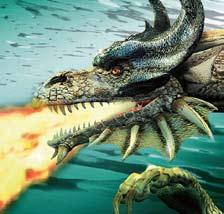


Mythic Creatures: Dragons, Unicorns & Mermaids
Until 23 May 2010
North, South and Gallery One
For thousands of years, humans everywhere have brought mythic creatures to life in their stories, songs and works of art. Life-size models, engaging hands-on interactives, fossils, paintings, textiles and diverse cultural objects from around the world demonstrate the timeless allure of these strange and fantastic beings. Whether inspired by the natural world or by the imagination, together mythic creatures give shape to humankind’s greatest hopes, fears and dreams.
This exhibition is organised by the American Museum of Natural History, New York (www.amnh.org) in collaboration with the Australian National Maritime Museum; The Field Museum, Chicago; Canadian Museum of Civilization, Gatineau, Quebec; and Fernbank Museum of Natural History, Atlanta.
Major sponsor
Wrecks, reefs and the Mermaid 10 March–13 June 2010
Tasman Light Gallery in 2009 the Australian National Maritime Museum organised two archaeological expeditions to remote coral reefs off the coast of Queensland, sponsored by the Silentworld Foundation. This selection of photographs documents the search for HM Colonial Schooner Mermaid, wrecked in 1829, the wrecks of HMS Porpoise and Cato, both lost in 1803, and the marine environment of these sites.
David Moore –
Portraits of a shipping company
From 13 May 2010
USA Gallery
World-renowned Australian photographer David Moore was commissioned by Columbus Line to create photographic portraits of their shipping activities. The company began operations between North America and Australia and New Zealand in 1959, the first regularly scheduled container shipping service.
on the water
HMB Endeavour replica voyage program 1–29 April 2010
To celebrate the 240th anniversary of Cook’s arrival in Australia, HMB Endeavour is offering a range of voyages from day trips to five-day offshore adventures. Tickets are selling fast, so book now to secure your berth!
Visit www.anmm.gov.au/endeavourvoyages or freecall 1800 720 577.
Note: Endeavour will be closed 29 March–6 May. Other dates open 10 am–4 pm.
Adult $18, child/concession $9, family $38. Members FREE. o ther ticket combinations available
on the water
Barque James Craig (1874)
Daily Wharf 7 (except when sailing)
Sydney Heritage Fleet’s magnificent ironhulled ship is the result of an award-winning 30-year restoration. Tour the ship with various museum ticket packages (special discount for Members). The ship sails on alternate Saturdays and Sundays. Check www.shf.org.au for details
Travelling exhibition
Exposed! The story of swimwear Until 9 May 2010
South Australian Maritime Museum 22 May–8 August 2010
Queensland Museum, South Bank Movie sirens, aquatic stars, bathing beauties, athletes, swimmers and designers have all played their part in the evolution of the modern swimsuit. Exposed! places Australian swimwear in a global context of design and swimming history, and popular culture.

Sail Away program
Joseph Banks and the flora of the Australian east coast
Until 10 April 2010
Goulburn Art Gallery, NSW
24 April–25 July 2010
Western Plains Cultural Centre, Dubbo NSW
Engravings of Sydney Parkinson’s exquisite original botanical drawings from Cook’s first voyage.
Sail Away program
Little Shipmates – seafaring pets
Until 22 April 2010
Redcliffe Museum, Queensland
30 April–25 August 2010
Parkes Shire Library, NSW
Cats, dogs, monkeys and birds – shipboard pets recorded by Sydney photographer Samuel Hood for over 50 years.
centre: Photographer David Moore Hamburg Süd collection. right: Peggy Moffitt modelling Rudi Gernreich topless swimsuit 1964. Photograph by William Claxton Courtesy Demont Photo Management
Exposed! The story of swimwear
Mythic Creatures: Dragons, Unicorns & Mermaids
David Moore – Portraits of a shipping company
Si GNALS 90 M ARCH T o M AY 2010 29
For schools
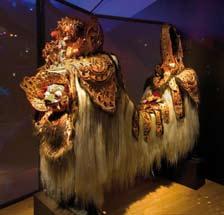
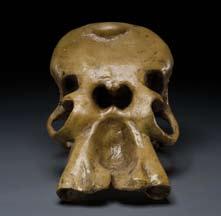

Over 30 programs are available for students K–12 across a range of syllabus areas. Options include extension workshops, hands-on sessions, tours with museum teacher-guides and harbour cruises. Visit our website: www.anmm.gov.au for details of all programs. Bookings essential 02 9298 3655 fax 02 9298 3660 or email bookings@anmm.gov.au
Mythic Creatures: Dragons, Unicorns & Mermaids
Years 3–12
English, History, HSIE, Creative Arts, Science and Technology, Visual Arts, Ancient History, Drama, Society & Culture
Students explore the magical worlds of water, air, land and sea, encountering the creatures of our imagination that inhabit these mythical realms.
Guided tours
$6 per student
General tours
Years 2–12
Students tour the Mythic Creatures exhibition with our teacher-guides.
We Dig Mythic Creatures tour
Years 5–12
Students hear stories of when giants, griffins and dragons roamed the earth, and investigate the role of archaeology in separating fact from fiction.
Workshops
$10 per student, includes a tour of the exhibition
Blended & Borrowed
Years 5–12
Students form ‘communities’ of the air, water, fire and land then design one aspect of a mythic creature that represents their realm. Communities combined their creatures to form a chimera (hybrid creature).
Mythic Mask Making
Years 3–12
Students decorate a mask to personify a creature that represents a force in nature, then create and perform a ceremony that reflects the cultural importance of their creature.
Sailors & Superstition Game
Years 3–7
Students become playing-pieces in a life-sized board game as they explore the myths and legends of the sea.
Storytelling –
Mythic Creatures of the Unknown
Years 3–12
A wise old sage, concerned that a creature is living in his cave, seeks encouragement from the audience to help him face his fears.
Create a Creature
Years 2–8
Students choose from a number of fantasy world settings then use their imagination and a variety of craft materials to create their own mythic creature specifically suited to living there.
Mystical Maritime Myths
Years 5–10
Students use the exhibition as a stimulus to create their own maritime mythological story. Elements include characterisation, setting, descriptive writing and structure.
Core programs
Transport
Years K–2 HSIE, Science
Students tour the museum identifying various forms of transport connected with water – sailing ships, row-boats, ferries, tugs, a Navy destroyer, water traffic and even a helicopter! An optional cruise by heritage ferry takes in industrial, commercial and passenger transport systems on the harbour.
$6 per student (cruise extra)
Pyrmont walk
Years 9–12 History, Geography
Explore this inner city suburb from the perspective of changing demographics, construction, planning and development. Led by a teacher-guide, students walk the streets of Pyrmont and examine changes. This program is suitable as a site study for History and Geography. A harbour cruise examining change and development along the waterfront is also available.
$12 per student (cruise extra)
Mythic Bali Barong
Mythic cyclops or dwarf elephant?
All photographs this page D Finnin/AMNH Si GNALS 90 M ARCH T o M AY 2010 30
Mythic Japanese goblin Tengu mask

















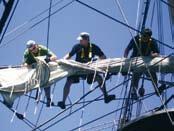


THE AUSTRALIAN NATIONAL MARITIME MUSEUM PRESENTS Sail aboard James Cook’s Endeavour for a voyage of a lifetime! Tickets selling fast BOOK NOW to secure your berth! NMM990_SIG HIGH SEA ADVENTURES You can still apply to join our short haul expeditions as voyage crew, learning to sail and live just like Cook and his crew, while experiencing 18th century blue water sailing at its best. 11–15 April Sydney – Broken Bay – Sydney 25–29 April Sydney – Botany Bay FOR DETAILS & BOOKINGS contact the Endeavour office on 1800 720 577 or (02) 9298 3859 Join our mailing list to receive information about future voyages www.anmm.gov.au/endeavourvoyages ANMM MEMBERS & VOLUNTEERS RECEIVE DISCOUNTED RATES ON BOTH VOYAGES SEE IT FIRST ON News_Exclus_9letter_178x128.indd 1 9/02/2010 10:02:16 AM Si GNALS 90 M ARCH T o M AY 2010 31
Paradise
lost?
Maritime historian and writer Randi Svensen introduces the Tribal Warrior Association and invites museum Members to take the association’s fascinating Aboriginal culture cruise on Sydney Harbour, on their historic Torres Strait pearling lugger, to learn a new set of stories about this beautiful body of water. Booking details page 24

As the former World-War-II torpedo recovery vessel now called Deerubbun glides out of Circular Quay, our tour guide invites us to accompany him on a journey back in time. The guide is a welcoming, gently spoken Indigenous man called Terry Olsen. By profession he’s a teacher, an actor, a dancer and singer. He quickly demonstrates an uncanny ability to transport his audience from the 21st century back to a time when his people were the sole residents of this beautiful harbour.
They were the Eora, Cadigal, Guringal, Wangal, Gammeraigal and Wallumedegal people. Their lands were the forests and sandstone bluffs, the swamps and open landscapes that come down to the shores of Sydney Harbour and all its arms and bays, and on up the Parramatta River. While each of the different clan and language groups had their own territory – all of them now highly desirable waterside addresses with names like Manly and Mosman, Drummoyne and Darling Point – Terry tells us that the islands dotting the harbour were neutral ground shared by all. The stories we hear from him are the stories of these earlier people and the places they inhabited.
Virtually none of them are stories we were taught at school.
The only one that’s familiar is the story of Bennelong, the Aborigine who was captured while fishing at Manly Cove in the early days of the new British colony. Bennelong developed a strong relationship with Governor Phillip, who employed him as a mediator to improve relations with the settlers. Phillip had a hut built for his friend where Sydney Opera House now stands on Bennelong Point.
As those famous, dazzling-white Opera House shells loom over us, Terry explains that music of a different kind reverberated here for thousands of years before its present tenants Sydney Symphony and Opera Australia began to make their music. This is where Indigenous people from all over the harbour met to feast, sing and dance. He tells us that there used to be shells of a different sort glistening here in the sun – shell middens many metres high, built up over centuries of feasting on oysters and other shellfish. It comes as a surprise to learn that this was originally an island at low tide, which became tied to the mainland when the shell and bone scraps filled the gap ten metres deep. When Europeans started building they mined the middens, burning and crushing the shells to make lime for mortar. Fragments of those shells are still visible in the mortar of older buildings at the Rocks and Sydney Cove.
This place of feasting, song and dance was called Tjubugully, named for a white clay that the people used to decorate their bodies for their ceremonial dances. It’s disappointing that the name has disappeared from the knowledge of most of us – although I was pleased to learn, when researching this article, that the first symphonic performance at the opening of the Opera House in 1973 began with a fanfare composed by the Australian musician John Antill (1904–1986), honouring this place-name: it was called (with a different spelling) Jubugalee
Our harbour excursion is one of the regular two-hour cruises run by the Indigenous organisation Tribal Warrior Association to provide an insight into Aboriginal life around Sydney Harbour
Si GNALS 90 M ARCH T o M AY 2010 32
Photographer J Mellefont/ANMM below: The
As those famous, dazzling-white Opera House shells loom over us, we learn that music of a different kind reverberated here for thousands of years

Si GNALS 90 M ARCH T o M AY 2010 33
opposite: Tour guide Terry olsen on Clarke island, with the Tribal Warrior Association’s vessel Deerubbun moored below.
association’s flagship Tribal Warrior, a Torres Strait pearling lugger launched about 1903. Photographer Jonathan Bogais.

before the arrival of Europeans in 1788. Today we will motor past Circular Quay and Farm Cove, Mrs Macquarie’s Point, Fort Denison, Woolloomooloo Bay and on past Garden Island to Clarke Island, while Deerubbun’s guide Terry tells us their stories and teaches us their original names.
Circular Quay was Warrung or Weerung, meaning ‘scars on the back’, since here was an initiation ground where young Aboriginal boys became men, their backs scored as part of their rite of passage. Farm Cove was Wocan-mugully, or ‘crow headland’. Mrs Macquarie’s Point was Yu-rong, and Fort Denison was Mat-te-wan-ye. The Indigenous people stopped visiting it after 1796 when the body of a convicted murderer, Frances Morgan, was hung from a gibbet there as a lesson to other offenders. Terry Olsen tells us his people were horrified by the way the newcomers punished each other.
The original inhabitants of Sydney Harbour were a seafaring people. Virtually every early painting or drawing of colonial Sydney Harbour depicts Aboriginal canoes on the water as a normal part of day-to-day life in the settlement. They show the bark canoes, tied at either end, that men, women and children used with ease – although the Europeans weren’t able to balance in them! They depict the smoke from fires carried on a bed of sand or mud in the canoe, for cooking and for warmth.
The harbour teemed with food all year round, and it provided shelter, fresh water and an idyllic lifestyle for the people who lived on its shores for countless generations. Women fished from canoes with hand lines they spun from the inner
bark of the kurrajongs and hibiscus trees, and a shell hook. Men used multi-pronged spears tipped with bone. They would chew a cockle or other shellfish and spit this into the water to lure fish to the surface, and then spear them.
It’s a strong connection with the intensely maritime lifestyle of these first inhabitants of Sydney Harbour that gives the Tribal Warrior Association its primary focus, which is to train today's Aboriginal youth in maritime skills – something their forebears would have received as a matter of course from their elders. In today’s world the training is intended to open up employment opportunities in the maritime industries. The association was established by concerned Aboriginal people who saw it as a way to maintain and support Aboriginal culture, and to provide economic and social opportunities for disadvantaged young people.
The training takes place on the Tribal Warrior Association’s two vessels, Deerubbun – the tour boat that we are embarked upon – and their flagship Tribal Warrior. Both of them are vessels with important maritime heritage associations.
The 15.4-metre (50-foot) Tribal Warrior is a gaff-rigged ketch built more than 100 years ago as a Torres Strait pearling lugger, originally named Mina. After being acquired by the Tribal Warrior Association she began an ambitious circumnavigation of Australia in 2001. Styled as a voyage of reconciliation, it included stops at many ports around the country during which the local Indigenous communities contributed to the vessel’s collection of carvings worked directly into her timbers. One carving on the main mast tells the story of the whale,
left: one of the museum’s very first acquisitions was this rare watercolour attributed to the convict artist Richard Browne (1776–1824) and painted about 1820. While the scale of the canoe is unlikely, its construction and the various implements are accurately recorded.
The figures in the canoe are identified as ‘Burgon, celebrated fisherman of New South Wales’ and his wife. ANMM collection opposite: Deerubbun’s captain Chris Duckett and his daughter Christine; tour guide Terry olsen, deckhands Travis Close and Leon Boatman. Photographer J Mellefont/ANMM
which guides friends into calm waters. The message is ‘Let us come together and talk peace’. When she returned to Sydney in 2003 after a voyage lasting 648 days, Tribal Warrior was welcomed as an honoured guest at the Australian National Maritime Museum. She’s been back on a number of occasions.
I have to confess to a personal interest in the association’s other vessel, Deerubbun, the Dharug people’s name for the Hawkesbury River. Her 18.3-metre (60-foot) hull was built in 1942 by my uncles, the Halvorsen brothers, as one of a series of torpedo recovery vessels for the RAAF. In the 1960s she was sold to the Snowy Mountains Authority and worked on inland waters such as Lake Eucumbene. I feel a deep sense of pride when I see her solid diagonal planking still sound almost 70 years after she was built. Deerubbun’s timberwork also carries many Indigenous carvings. Although the superstructure bears no resemblance to the vessel’s original design, she is no less useful now than when she was first built. Perhaps more so.
On our tour, Captain Chris Duckett (a former crewmember of the museum’s Endeavour replica) was ably assisted by his deckhands, Leon Boatman and Travis Close. Deerubbun’s home base is down at the Sydney Fish Markets in Blackwattle Bay where I have come to know her and her crew over the many years that I’ve been tying up there on my own family boat. During that time I’ve watched Leon transform into a fine, confident young man, thanks to his mentors in the association. His fellow crewman, Travis, has just qualified as a deckhand and has a grin that says the world is his oyster.
Si GNALS 90 M ARCH T o M AY 2010 34
Indigenous communities contributed to the vessel’s collection of carvings worked directly into her timbers

to teach. But Shane and the other Tribal Warrior Association elders are also tough on their charges, many of whom come from troubled backgrounds. I’ve watched as groups of timid – and sometimes surly – teenagers embark on a trip on Deerubbun, only to return a few hours later, feeling like ‘one of the crew’ and in touch with their heritage as if they finally ‘fit in’ somewhere. That, to me, is the best part: the look on the faces of the young Aboriginal people as they understand their place in their culture.
Belanglewool. It was a playground to which Aboriginal families travelled by canoe, bringing their own fires for a dawn feast of succulent oysters, prawns and fish. That was followed by swimming, fishing and relaxing by the water’s edge.
Both young men who have come up through the Tribal Warrior Association are efficient, good-natured and helpful, and both have the unqualified admiration of their colleagues. They are a credit to their teachers and mentors.
With a management committee comprised of respected elders, the Tribal Warrior Association is headed up by my old friend, Shane Phillips, whose approach to life is both positive and pragmatic. Shane is a man of the sea and that’s a bond we share. I trace my nautical roots back through Norwegian sailors and boatbuilders and, I reckon, to some Vikings a thousand years back, but Shane’s Indigenous seafaring ancestors go back a lot further than that. Shane has spent his life on ‘The Block’ in Redfern and is an inspiration to the Aboriginal youth he works so hard to encourage and
Maritime training by the association is delivered in conjunction with OTEN (the Open Training and Educational Network of NSW TAFE) and the Western Australian Maritime College. Qualifications are recognised throughout Australia and range from a Certificate I in Maritime Operations (General Purpose Hand) through to Master Class V. Training for certificates in radar operation and marine engineering is also available. Practical training is delivered on Deerubbun and on the Tribal Warrior, and the craft are often seen on the harbour during significant events where they sometimes perform a welcometo-country ceremony for visiting ships or dignitaries. And the Indigenous heritage tours of Sydney Harbour, usually on board Deerubbun, are offered as a very welcome addition to the cultural experiences available to the harbour city’s residents and visitors.
Towards the end of our tour this summer, we disembark on picturesque Clarke Island, enjoying one of the undeveloped gems of Sydney Harbour. Our guide Terry sets the scene as his forebears enjoyed it, when it was named
On the eastern side of the island is a tidal rock pool, a natural fish trap. Lunch was right to hand and always fresh. Sitting under a rock shelter on the western side, Terry invites us to imagine the sunset over a pristine harbour – no high-rise, no smog – and imagine ourselves as sated, tired but happy picnickers ready for the canoe trip back to the mainland. Finally he exchanges his clothes for a loincloth and daubs himself with white clay while explaining the significance of the pattern he has selected, and entertains us with song and dance and didgeridoo. It’s a highlight of our wonderful afternoon afloat.
Thanks to all at the Tribal Warrior Association for their generosity, information and insights.
Join our Members for a unique event: the Indigenous-culture harbour cruise on the association’s flagship, the former Torres Strait pearling lugger Tribal Warrior on Wednesday 7 April. Details on page 24.
in addition to maritime and cultural activities, the Tribal Warrior Association provides food and other essentials to those in need, and operates drug counselling and rehabilitation programs. it is a not-for-profit organisation and is a registered charity; donations are tax deductible. Visit www.tribalwarrior.org or phone (02) 9699 3491.
Si GNALS 90 M ARCH T o M AY 2010 35
Sail handling on
 HM Bark Endeavour replica under plain sail in fair weather en route to Newcastle Maritime Festival in 2008.
HM Bark Endeavour replica under plain sail in fair weather en route to Newcastle Maritime Festival in 2008.
Si GNALS 90 M ARCH T o M AY 2010 36
ANMM photograph
Endeavour
The Endeavour replica is a fully functioning, educational museum whether alongside our wharf or making a passage, says crewmember Anthony Longhurst. Not a day goes by without someone learning something. Here he tells us what many thousands of sea miles have taught us about 18th-century, squarerigger sail handling.
The hard work of setting the sails is soon forgotten once we sit back and admire the beauty of the vessel under full sail. There is the creaking and sighing of the ship’s timbers, the slight rapping of reef points against their sails far above and the occasional slap from a wave striking the weather bow. Below decks nothing can be heard other than the creaking hull and the gurgle of water passing along the ship’s sides, leaving the rudder in small whirlpools trailing astern.
There were very good reasons why the British Admiralty and James Cook chose this old coal-hauler, built in Whitby on England’s north-east coast, for a long voyage to the South Seas. The original collier, the Earl of Pembroke, was built to be managed by a small crew, strong and seaworthy enough to survive the rough, shallow North Sea and occasional groundings, nimble enough to get in and out of coastal ports, capacious enough to carry a viable cargo – or in Cook’s case, supplies for her large complement not just of sailors but of scientists and marines. She was everything they were looking for.
It is when using another 20th-century necessity – the engines – that we understand that the vessel’s hull shape is designed to be pulled by the sails rather than pushed from astern by propellers. Despite a number of lower fore-and-aft sails that we set to help stabilise and balance the ship when the engines are running, the helmsman must always be vigilant. The ship will yaw and dart off course with little notice, and it takes up to half a turn of the helm to correct. Motoring can be like trying to push a ball across the surface of a pool with a broom handle!
When many people first see our Endeavour they question how the ship sails, with her bluff bow pushing along so much water. In addition, many believe that square-rigged ships can only sail downwind and must be slow and uncomfortable. The reality is surprisingly different.
When putting to sea on the replica, the first thing we notice is the comfortable motion as she steadily rolls, pitches and scends (rises again) on the swell. The masts swing in wide, gentle arcs against the sky, whispers of wind fill the billowing canvas. She heels over comfortably as the helmsman puts a bit of helm on to check her tendency to gripe (turn or ‘round’ up into the wind – what sailors call ‘weather helm’). This only takes one or two spokes of helm. The helm is eased again as she settles on her course once more.
The Royal Navy did a great job in recording the hull and construction details for 20th-century replica builders. The rigging has been scaled to the Admiralty specifications and tables relating to vessels of her size. Instead of hemp rigging and sails, however, the replica has manila standing rigging, and for durability and rot resistance uses polypropylene running rigging and Duradon sail cloth (a polyester woven with the appearance and feel of natural canvas). It also uses modern antifouling paint instead of ‘White Stuff’ – a mixture of oil, rosin and sulphur or brimstone –applied over sacrificial planks or deals of fir. But notwithstanding these differences, we can conclude that the replica and the original ship behave quite alike under sail, since the hull shape and rig are as identical as modern day practices and research can allow.
Once under sail, though, you feel as though you’ve stepped aboard an entirely different vessel. When balanced with the appropriate sails for the conditions, Endeavour leads herself with the minimum of effort from the helmsmen. At times the helm may need no adjustment for up to half an hour, and then it might only need half a spoke (1/20th of a turn on the ship’s wheel). She only needs a slight breeze to make enough way to gain steerage, which occurs when making about one knot through the water. This surprises some people, since the tall rudder is very narrow, designed to create the least amount of drag. The ship can be kept on her course in as little as five knots of breeze.
The foremast is relatively close to Endeavour’s broad, bluff bow, stepped about six feet (1.82 metres) abaft the forefoot (where the stem post joins the keel). In later years, foremasts gradually moved further aft as vessels’ bows were given a finer entry and therefore had less buoyancy to support the weight of the rig above it. With Endeavour’s foremast stepped so far forward, there is a great depressing force upon the lee bow. When on a beam reach (wind blowing from the side – around 90°) or close hauled (wind from a forward quarter), this tends to create weather helm by lifting the stern as the bow is pushed down. To help compensate for this the jib is set way out in front, lifting the bow and pushing the head off.
Si GNALS 90 M ARCH T o M AY 2010 37

Endeavour in sail
What follows is a description of how the ship’s sail plan is adjusted when sailing with a well-trained crew to compensate for different wind strengths.
0–20 knots
With the wind two points (22.5°) aft of the beam – Endeavour ’s best point of sail –we begin with all plain sail set in winds of less than 20 knots, except the studding sails. These additional light-wind sails were used to extend the area of the larger square sails. i won’t include them here, since they are generally the first to be brought in as the wind increases. They are illustrated on page 40. The total sail area shown above would equal 9,468 square feet. With the wind at 15 knots, the maximum combined pressure from all sails set on the ship is approximately 3.2 tons.

20–25 knots
All sail except the main staysail is set until the wind increases to about 20 knots across the deck (apparent wind) and weather helm starts to increase. The main topgallant staysail is brought in (handed) to ease excess strain off the main topgallant rigging and to remove some of the heel that is created by this sail being so high in the rig. The fore topgallant is then handed to ease the depression on the bow. This is preferable to removing sail aft, which is not yet the cause of the weather helm. The total sail area set at this time is 8,561 square feet. With the wind at 20 knots, the maximum pressure from all sails is approximately 5.1 tons.
20–25 knots

Main Topgallant Fore Topgallant Main Topsail Mizzen Topsail Mizzen Topmast Staysail Main Course Main Topmast Staysail Mizzen Course Mizzen Staysail Fore Topsail Fore Topmst Staysail Fore Course Jib Sprit Topsail Spritsail 0–20 knots
Si GNALS 90 M ARCH T o M AY 2010 38
illustrations by Anthony Longhurst.
25–30 knots
As the wind increases to about 25 knots apparent, the sprit tops’l, jib, main topgallant and mizzen topmast stays’l are handed and furled, and the first reefs are put in the fore and mizzen topsails. The effort of all the sails set is generally centred slightly forward of the ship’s turning point (CLR or centre of lateral resistance). The CLR moves forward as the bow is depressed. The fore topmast stays’l is set from the end of the sturdier bowsprit to compensate for the loss of the jib, maintaining some lift for the bow. it is about this time that a diagonal reef is taken in the sprits’l, to keep the weather clew (lower corner) clear of the building seas. The sprits’l helps prevent the ship from rounding up. in these conditions, Endeavour comfortably makes six to seven knots, heeling at about ten degrees. The occasional cresting wave slaps her side and sends spray across the deck. The helm is comfortable and requires minor adjustments. The sail area is 6,313 square feet. With the wind at 25 knots, the maximum pressure from all sails is approximately 6 tons.
30–35 knots
As the wind increases to 30 knots apparent, the main topmast stays’l is handed. This is a large sail and at almost 700 square feet adds a lot of stress to the main topmast. With this the second reef is put in the fore tops’l and the main topsail has the first reef put in. By taking sail in like this, you not only control the depressing of the bow, but you also lower the sails’ centre of effort, thereby reducing the heeling of the ship. The more a ship heels over, the more she is forced to round up. Depending upon the seas, it may be time to hand and furl the spritsail. The helm becomes heavier to turn and it can give a light kick as a wave slaps against it. More spray comes on deck and the rig is starting to sing as the ship rolls to windward. Sail area has reduced to 5,185 square feet. With the wind at 30 knots, the pressure in the sails is approximately 7 tons.
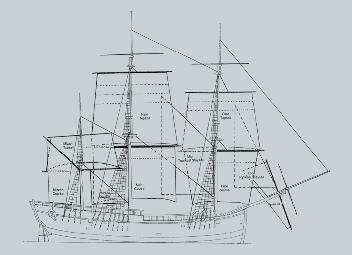
35–40 knots
At 35 knots, the second reef is put into the main tops’l, the fore tops’l is close reefed (i.e. the third reef goes in), and the mizzen tops’l is handed and furled along with the spritsail (if it has not been already). The mizzen course, which is what we call the gaff-rigged fore-and-aft sail, is also handed as this will now act to round the ship up, since there is not much sail left forward to counteract it. The main stays’l is set. The seas grow in time to about three to four metres, the helm requiring more attention as the ship occasionally takes a heavy roll to leeward. The wind in the rig is becoming louder and the spray from the seas comes more regularly across the decks forward. Sail area is 4,194 square feet and at 35 knots of wind, the pressure in all sails is approximately 7.5 tons.
40–45 knots
At 40 knots we consider sending the topgallant yards to the deck. This reduces windage aloft and helps to lower the ship’s centre of gravity. Being light, they are vulnerable and if the conditions worsen they are a dangerous place to be if a sail should break loose from its gaskets (lashings). Crewmen would have to climb 100 feet aloft to wrestle the sail back under control – an exhausting job. The main tops’l is close reefed and the anchors are secured with extra lashings. The rigging starts to howl, spray is fairly constant and the ship is starting to gather impressive speed – anywhere from nine to 11 knots. She carries about four spokes of weather helm and when the swell lifts her stern she wants to gripe further. Total sail area is down to 4,060 square feet; at 40 knots there is approximately 9.3 tons of pressure from all sails.
45–50 knots
At 45 knots, the main course has the sheet eased to spill some wind, or a reef is put in instead. The lee clew is far enough aft on this sail when braced up that it will try to force the ship’s head up into the wind. if the wind is on the quarter or further astern, this sail would have been handed and furled earlier, letting air through to the sails further forward and placing the centre of effort well forward. The main stays’l, tiny mizzen stays’l and fore topmast stays’ls are the only fore and aft sails still set. The braces controlling the tops’l yards feel like iron bars due to the strain from the wind in the sails. if the blow is expected to last, we may ‘house’ the fore and main topgallant masts. This takes skill for the crew to do in rough weather. The masts are lowered vertically and lashed to the topmasts, and their standing rigging is shortened by tying sheep-shanks. Alternatively, the masts can be sent right down to the deck and secured on the gallows. Life lines are run out on deck for the safety of the crew. The seas build to about six metres and anything that has not been securely lashed starts to work its way free. Seen from the waist, the seas loom above the horizon as the ship descends into the troughs. Some seas collapse under their own weight and slop onto the deck. Sail area is 3,960 square feet. With the wind at 45 knots, the pressure from all sails is approximately 12 tons.
50–55 knots
With the wind reaching 50 knots the tops’ls need to come in and a reef is put in the mainsail. it takes all hands to handle the lines, go aloft and tame the angry, flogging canvas! if you haven’t recently cut your fingernails, you may soon lose them. The crests of the waves are being blown off into long white streaks across the sea. The air is starting to fill with spray and stings your face like a sand blaster. it’s an effort just standing up against the wind. Think of the force on your hand held out of a car window on the freeway. Now imagine that
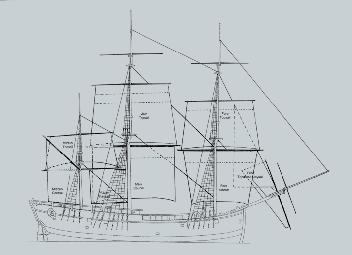
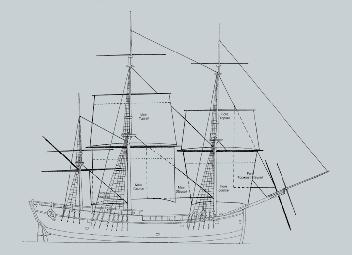
25–30 knots 35–40 knots 30–35 knots Si GNALS 90 M ARCH T o M AY 2010 39

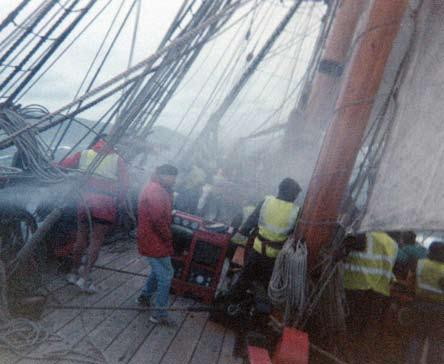
over your entire body as you climb to the tops’l yards 60 feet above the deck as the ship rolls to 30 degrees or more. The deadlights on the great cabin windows are now dogged tight, so is the forward hatch and we have to use the after hatchway to get on deck or go below. The total sail area set is 2,407 square feet. At 50 knots of wind, the pressure in the sails is approximately 9 tons.
55–60 knots
At 55 knots, it is time to hand and furl the main course. This is a large sail of almost 1,000 square feet and has to be treated with respect. The tacks (lines that lead the windward clew forward) have a diameter of 44 mm and at times require the entire ship’s company to handle. We need about 20 people to lay out on the yard to furl, always starting at the weather yardarm

to help spill the wind from it. if you were to start on the leeward side, the sail would act like a funnel and would be impossible to control. The gaff-rigged mizzen course would now be reset along with the main stays’l. The fore topmast stays’l would be handed and furled, and a reef placed in the fore course. if this weather lasts for days, the seas build to over ten metres; it often feels as though they are going to crash on top of you. in these conditions you really begin to appreciate the ship’s design. With her high topsides and buoyant bow, she lifts and lets the seas pass under her. Rarely does a big sea break onto the decks. More modern ships in these conditions often find their decks awash. The sail area set at this time is 1,473 square feet. With the wind at 55 knots, the pressure from the sails is approximately 6.6 tons.

60–65 knots
Most people want to go home about now! At 60 knots you have the choice to ‘lie to’ (heave to) or to scud (run before the wind) if there is the sea room to do so. To scud we have to hand the mizzen course and stays’l, ease the main stays’l sheet and square the foresail. The foresail sheets would be eased in order to get the centre of effort way out ahead of the ship and to lift the bow. By doing this you reduce the chance of broaching (turning side on to the swell) as the ship surfs the waves. Steerage is lost as a vessel surfs and the helmsmen have to be on their game to catch any deviation in the ship’s course immediately. Heavy lines can be trailed astern in order to create drag on the stern, reducing the chance of rounding up if a wave was to catch her –although this can increase the chance of being pooped (having a wave board over
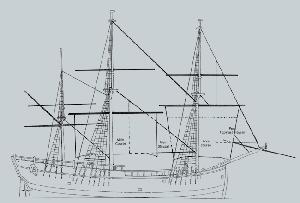
50–55 knots 45–50 knots 40–45 knots
Endeavour in a strong gale in the Cook Strait, New Zealand, 2000. Photographer Anthony Longhurst
Si GNALS 90 M ARCH T o M AY 2010 40
Endeavour in the indian ocean in 1996, studding sails set to weather off the fore yards.
I have referred often in these pages to weather helm. This natural tendency to steer up into the wind can be used to advantage. It can be reduced by the set of the sails or it can be exaggerated to assist in getting the ship to tack, speeding the natural process of rounding up to get the bow through the wind and settled onto the other tack.
When it is blowing quite fresh, it is more advisable to ‘wear’ (gibe) the ship onto the other tack, if sea room allows, rather than tacking through the wind. This is because the rigging best supports the masts from pressures from athwartships (the side) or from aft (behind). While stays that lead forward help steady the masts, they are not as strong as the numerous shrouds and backstays that do the majority of the supporting. If a stay was to break while the wind was blowing from ahead, the rig could be lost.
the stern). o ver time these large following seas can reach 15 metres in height. The air is completely full of spray, as the wind strips the crests off the waves and hurls them along the sea surface and into the air, turning the seas completely white. The noise is like standing in a tunnel with a freight train roaring past. it’s almost impossible to hear a person standing next to you yelling at the top of their lungs! The sail area is down to 1,027 square feet. At 60 knots of wind there is approximately 5.5 tons of pressure in the sails.
65+ knots
if the wind was to increase further, the foresail would have to be handed and the ship turned to lie to. This can be dangerous as you need to turn the ship temporarily broadside (side-on) to the swell. The right moment must be chosen carefully! To lie to,
Endeavour is capable of sailing to windward, but not like a modern yacht. She can sail with the wind about 60 degrees apparent from the bow. Since she loses about 20 degrees of leeway with an experienced hand on the helm and all sails properly trimmed, she can make good about 10 degrees to windward. If we try to point the vessel any higher, the lift created by the sails is lost and leeway increases, so the ship falls away from the wind. With a sea running she will hold her ground if properly sailed and steered, but any unfavourable current will work against her. To work the ship away from a lee shore can be very difficult – as countless sailing-ship wrecks attest. Endeavour, however, is a very comfortable sailer. She is built strongly and her rig, if well managed and maintained, will survive any weather. But it can be easily damaged if handled incorrectly, putting those on board at risk.
the foresail must be furled and the mizzen course set. The vessel will then ride about four points (45°) to the wind, meeting the seas with her buoyant bow that lifts and rides over them. The wind on her high stern helps to keep the ship’s head to wind. This is where Cook said ‘No sea can hurt her laying (hove) to under a mizzen balanced’. While lying to with the mizzen course and main stays’l set, the vessel slowly forges ahead and does not fall too greatly to leeward. it can sit like this until the conditions abate. The ride is not particularly comfortable as the ship pitches and at times rolls heavily; everything would be wet and everyone exhausted. The rigging still has to be carefully attended for wear and tear and all sails need extra gaskets so the wind cannot tear them open. We are down to 711 square feet of sail with approximately 3.8 tons of pressure from 60 knots of wind.
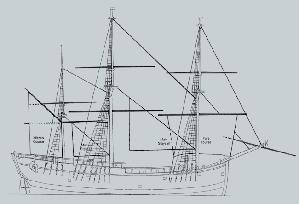

Part of the reason behind building a replica vessel is to learn about the problems faced by those who went to sea on the originals. This is where we gain an understanding of the evolution of the sailing vessel to the present day, and develop appreciation for the societies and the people who built and sailed these impressive ships.
Author Anthony Longhurst is a leading hand, shipwright and rigger with the HM Bark Endeavour replica team. His involvement with tall ships began in 1986 at age 13 and he sailed with Endeavour as a watch leader, shipwright, sailmaker and boatswain from 1995 until 2000. During the replica’s first world voyage he logged over 60,000 nautical miles, which took him to New Zealand, South Africa, England, the Caribbean, east and west coasts of the USA and Hawaii. Anthony rejoined Endeavour in 2005 when she came under ANMM management.
The hard work of setting the sails is soon forgotten once we sit back and admire the beauty of the vessel under full sail

55–60 knots 65+ knots 60–65 knots Si GNALS 90 M ARCH T o M AY 2010 41
Welcome

Berlin Wall to Welcome Wall
Last year was the 20th anniversary of the fall of the Berlin Wall – the forbidding symbol of the Cold War that divided the world in the decades after World War ii. our Welcome Wall coordinator Veronica Kooyman spoke to one of its latest registrants, Karin Anni Soßna (Sosna), about growing up in a divided Berlin.

Karin Anni Soßna arrived at Melbourne airport in 1981 with two young children, Anna and Max, a pram, two suitcases and a backpack. She had $1,000 in cash. They spent their first night in Australia in the People’s Palace hostel, the children sharing a single bed and Karin on the floor. The next day they took a bus to Mallacoota in East Gippsland, Victoria. Karin had left behind the two strongest figures in her life, her mother and her grandmother, in a city scarred by a divisive wall – Berlin.
Karin’s desire to migrate to Australia had begun at an early age. Growing up in the 1950s and ’60s in authoritarian Berlin she had only a limited knowledge of Australia, but her desire even permeated her sleep. She vividly remembers a voice in her dreams that told her, aged 12: ‘You will go to Australia because it is an empty land.’
At this time the Berlin Wall – begun in 1948 – was being completed, dividing the city physically, politically and
emotionally. Karin remembers when her family had to make the difficult decision about which side to live on. Initially Karin was to stay on the Russian-dominated East side with her grandmother. Her own mother was young and unmarried.
Karin’s father was the only survivor of a Bulgarian family extinguished in the Nazi concentration camps of World War II; he was unable to commit to a family of German origin. Karin’s mother moved to the West side where career prospects were better, consumer goods more available and movement less restricted. Karin’s grandmother looked young enough to pass as her mother, sparing Karin the stigma of being born out of wedlock.
Karin’s grandmother, whose ancestry was Polish and Czech, passed her surname Soßna down through three generations of women. She was a formidable character who had once walked over 1,000 kilometres to Berlin through the Czechoslovakian mountain
region known as the Sudetenland, leaving behind a country oppressed by the Great Depression and the burgeoning belligerence of some of its population.
Karin then moved to the West side to live with her mother, only a short time before the final checkpoint of the Berlin Wall was closed by barbed wire on 13 August 1961. In 1970 she began training as a nurse, in order to apply for a skilled migrant visa to Australia. Soon after gaining her qualifications in 1973 she was granted the visa. She bought a passage on a ship and was told she would be sent to work in Winton, Queensland, for the Royal Flying Doctor Service.
Her plans were unexpectedly derailed when she was suddenly detained for observation in a political prison. Karin’s crime was having associated with people under investigation by the authorities. She was held in isolation in a wing for female political prisoners, including members of the notorious BaaderMeinhof gang. Karin missed the boat
Tales
the wall
from
Si GNALS 90 M ARCH T o M AY 2010 42
The museum’s tribute to migrants, The Welcome Wall, encourages people to recall and record their stories of coming to live in Australia
When you are living in harsh conditions you share more, you give more, and you receive more
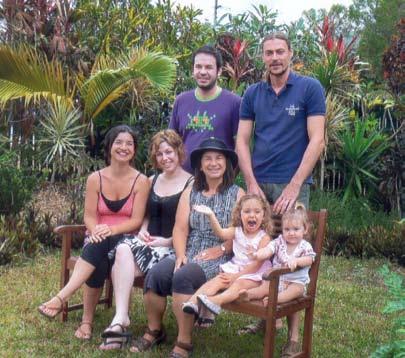
to Australia while compelled to attend court as a witness in a case that ran for over a year, though she herself was never charged.
Once the trial was over Karin tried to restore the pieces of her life, working as a nurse and visiting prisons and institutions as a volunteer to support inmates. She became involved in a rehabilitation program for ex-prisoners while living in an apartment-sharing community sponsored by the Berlin Social Democratic Party, which was turning old factories and warehouses into single-room apartments with shared kitchens and bathrooms.
At this time she was asked to take in a former prisoner who had escaped East Germany by swimming through a channel system, and had been detained and interrogated by both Western and Eastern authorities. Upon release he had become caught up with what Karin refers to as ‘the circle’, a group of people involved in criminal activity. Nevertheless, they formed a relationship and in 1976
Karin became pregnant with her first child, Max. Karin was to learn a lot about trust and how easily it could be broken. Finding it hard to break the influence of his friends, they moved to Devon, England, in an attempt to forge a fresh life, and also embarked on a trip around Europe, the United States and Australia in 1978. Standing on the beach at Mallacoota, Victoria, Karin’s urge to migrate was reignited. Back in England she reapplied for an Australian visa and married the father of her children – now including daughter Anna – so they could migrate as a family. Soon afterwards he disappeared with her savings for the journey. It was 1981 and she was due to leave for Australia. Karin made the decision to migrate with her children anyway. They flew via Berlin to visit her mother and grandmother, who between them had raised $1,000 for her.
Returning to Mallacoota, Karin eventually built a simple mud-brick house, working and volunteering
variously as a massage therapist, cleaner and gardener. Her husband followed her to Australia, but the marriage was not to survive and they both moved on to new relationships. Karin recently did make it to Winton, her intended destination so many years before, but sadly she was not accepted into the Royal Flying Doctor Service.
To celebrate her arrival and survival Karin has registered herself and her children with the Welcome Wall, and their names will be unveiled at our next ceremony on 2 May 2010. For Karin in particular, having her name inscribed on the Welcome Wall will be her lasting memorial since she has chosen not to have a grave, but instead is leaving her body for organ donation and medical science.
Asked how she responded to the fall of the Berlin Wall in 1989, and the recent celebrations of that event’s 20th anniversary, Karin answered: ‘I have a strong connection … from long ago there was always a candle being lit in Berlin for people on the other side. It was wonderful to see something that separated people coming down. I remember that pain of separation, and I recall this period very vividly, emotionally.
‘Everything was structured in East Berlin. You would queue for an hour just for a loaf of bread purchased with food dockets. For three hours my whole car was dismantled at a checkpoint when travelling from West to East because I had a copy of a women’s magazine, which was considered capitalist political material. My experience is that when you are living in harsh conditions you share more, you give more, and you receive more in return … both in Germany and Australia.’
Backpack migrant Karin Sosna the day she left Berlin with her children Anna and Max, being farewelled by her stepfather Bodo Kubis. Photographs reproduced courtesy of Karin Sosna.
Si GNALS 90 M ARCH T o M AY 2010 43
Karin (centre) surrounded by her family. Behind are her son Max (left) and son-in-law Udo Soltwedel. Front L–R: daughter Anna Soltwedel (SosnaSylvester), daughter-in-law Kirby Gatsfios, and her grandchildren Zara and Milla Soltwedel.
Collections
The Baagii vase
Vic Chapman
‘Uncle Vic’ Chapman is a Yuwaalaraay man who draws upon the Dreaming stories from his family’s traditional country as inspiration for his ceramic pieces. Here the artist reveals the delightful story behind the motifs he used to decorate the Baagii vase, now in the National Maritime Collection. This introduction to the artist and his work was prepared by Penny Crino.
Stories from a childhood growing up in outback Queensland, in the aftermath of the Great Depression and the decade prior to the Second World War, are the inspiration for the black underglaze figures appearing on this beautifully proportioned ceramic vase. Its creator, Indigenous artist and educator Vic Chapman, was born on 14 March 1932 at Currawillinghi Station, on Ballandool Creek near the town of Hebel on the NSW-Queensland border. His first attempts at fashioning pieces from clay were made using the black mud found on the banks of the creek, a tributary of the Darling River.
Uncle Vic, as he is widely and affectionately known among his family, community and those who work with him, has practised intermittently as an artist since 1966, as well as pursuing a career in teaching and later as a school principal. His functional white earthenware slip-cast pieces (vases, bowls and platters) are decorated with the dreaming stories of the Yuwaalaraay people of north-west NSW and south-west Queensland.
Uncle Vic has participated in two Sydney exhibitions. The first, In the Interest of Bennelong, curated by Ross and Tess Allas, was held at NSW Government House in conjunction with the first National Sorry Day. The second, Messages from the Fringe (curated by Tess Allas), was held at Walkabout Gallery, Leichhardt (now Birrung Gallery, Kings Cross) in May and June of 2003, and was a satellite exhibition of the Sydney Opera House’s annual Message Sticks Aboriginal Arts program. It was from this that the Australian National Maritime Museum purchased the Baagii vase in 2003.
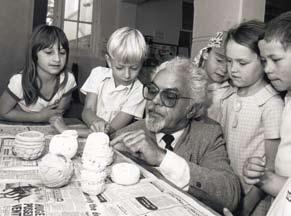
We asked Uncle Vic to tell us in his own words something about his art, and the making of the museum’s Baagii vase.
I turned to ceramics as therapy following the pressures of external studies with the University of New England in the late 1960s. I was indeed fortunate to have as my teacher Gillian Grigg, a product of the Bernard Leach School, who was then teacher in charge of ceramics at Wollongong TAFE. The therapy was successful and marked the start of a serious, rewarding and enjoyable involvement with pottery.
Around about that time my interest in the Yuwaalaraay language and culture was rekindled. I had given them little attention during the period I was away from my people at secondary school, at Teachers College and in the early years of teaching. This new-found interest was reflected in the decoration of the ceramic pieces I produced.
The images represented important events, places and people featured in my life. One of those memorable persons was Baagii, my paternal grandmother. She spoke traditional language, smoked a bent stem pipe and was an avid fisherwoman.
Baagii would often set off to her favourite fishing holes equipped with homemade fishing lines, bait and all the other necessary gear in a sugar bag. Sometimes she allowed those of us who promised to be quiet, and who took fishing seriously, to accompany her.
We soon noticed that when the fish weren’t biting she gathered a handful of clods from the river bank and threw them midstream. Mystified, we thought she had taken leave of her senses and commented to each other, ‘Baagii womba’ (Granny’s
Si GNALS 90 M ARCH T o M AY 2010 44
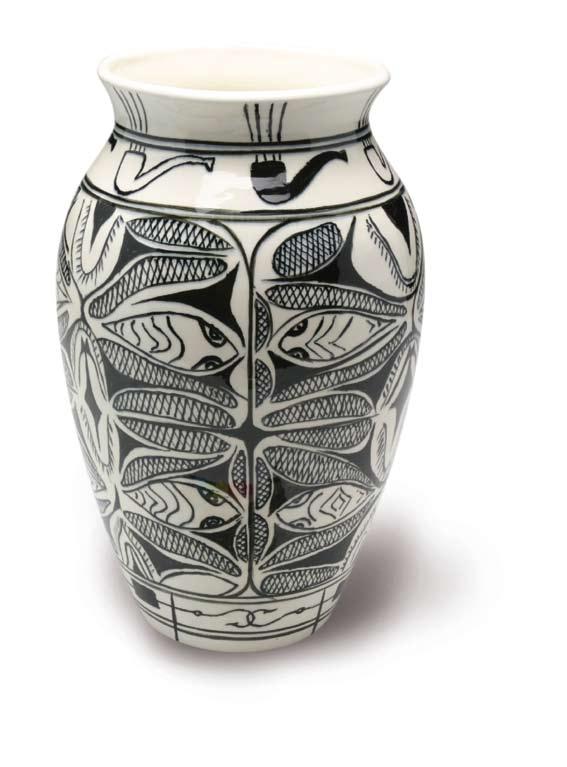
mad). Needless to say, she wasn’t as dotty as we imagined and always came home with a healthy catch.
The Baagii Vase incorporates all the elements of those fishing expeditions – the bent-stem pipe at the top of the vase, the home-made fishing lines at the bottom, the three panels showing the fish and the fish gills, and the clods represented by cross-hatching. The process I used to manufacture the vase involved throwing the form on a pottery wheel, then making a two-piece mould, slip-casting (using white E/W slip), decorating it with Duncan clear glaze over black underglaze, and finally bisque and glaze firings.
This year – over 70 years after those interesting outings – I’m going back to those very same fishing holes. It will
be interesting to relive the moments long gone, to test Baagii’s old theory of fish communication and to hope in these modern times that the fish come on line. Vic Chapman PSM, 2 January 2010
Vic Chapman is married to Ruth and is the father of Murray and John (both sadly deceased). He attended Wagga Wagga Teachers College on a scholarship and was a schoolteacher for 39 years. Vic achieved the distinction of becoming the first Aboriginal school principal in 1976.
In 1990 he was awarded the Public Service Medal in the Queen’s Birthday honours list for his outstanding contribution to public education in NSW and his service to the Aboriginal community. His lifetime of community
left: The Baagii vase is made of slipcast white earthenware, decorated with dreaming stories of the Yuwaalaraay people. Photographer A Frolows/ANMM
opposite: Uncle Vic inspires a new generation with his pottery skills. Wollongong about 1990, photographer unknown
We soon noticed that when the fish weren’t biting Baagii gathered a handful of clods from the river bank and threw them midstream
service was recognised in 2003 when he was awarded the Centenary Medal for Contribution to Indigenous and NonIndigenous Communities. Vic is now retired and lives in Wollongong on the NSW south coast with his wife Ruth. He continues to be a staunch advocate for the Aboriginal community and still actively supports community groups, including assisting local artists from the Coomaditichie Mission in Kemblawarra, Wollongong, to establish their own pottery.
With thanks to Tess Allas for permission to cite her online biography of Vic Chapman: Allas, Tess, Dictionary of Australian Artists Online, www.daao.org.au/main/read/1553 http://www.daao.org.au/legal/eula.html
Si GNALS 90 M ARCH T o M AY 2010 45

Currents Safety aloft
While conserving and teaching traditional 18th-century sailing skills, the Australian National Maritime Museum has used 21st-century technology to improve sailor safety aloft in the rigging of tall ships.
Report by Bill Richards
Staff of the museum’s operational replica of James Cook’s HM Bark Endeavour have commissioned a safety system involving a lightweight harness and modern climbing and rescue equipment, to improve mobility high above deck level as the ship pitches and rolls at sea. The system recently received commendations from two Australian safety authorities, and the museum is now fielding enquiries from the operators of tall ships in this country and overseas.
‘During the ocean voyages that are a regular part of Endeavour’s operations for the museum, we sail with 16 professional crew plus 40 paying voyage crew,’ says Endeavour’s Captain Ross Mattson.
‘Many voyage crew are novices who join us, literally, to learn the ropes. We expect them all to help sail the ship, and that means climbing the masts, up to about 100 feet (30 m), and then moving out on the yards to handle the sails.’
Captain Mattson said 18th-century sailors enjoyed maximum mobility high above the deck, with no safety equipment at all. Although some tall ship operators
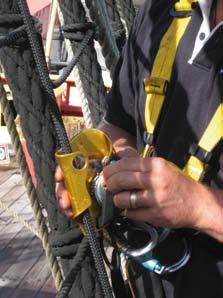
have seen that element of danger as part of the ‘character-building’ aspect of the tall ship experience, Captain Mattson said that our priority was to ensure that we put the very best equipment and procedures in place to ensure the safety of both professional and amateur crew.
When Endeavour came under the museum’s management in 2005, the safety equipment used was relatively heavy and cumbersome. A crew member would attach a lanyard to one of the ratlines (the rope ‘rungs’ tied to the shrouds – the heavy rigging that supports the mast), climb a short way, attach a second lanyard higher and then detach the first lanyard … and so on, up the mast.
With the new system, crew can simply attach their lanyard to a special rotary jammer that runs freely up and down a dedicated, vertical ‘static line’ – a safety line rigged parallel to one of the shrouds. They can climb freely without having to take a hand off the rigging to attach and detach lanyard clips. Having reached the yard, the crew member attaches his second lanyard to the safety line that runs along the top of the spar (it’s called a jack stay), detaches his first lanyard from the rotary jammer, and moves out along the yard.
Key features of the system are a new lightweight harness, developed for cliff rescues and other difficult climbs, and the rotary jammer – a lightweight device that slides easily up and down the vertical static line (rope) but locks fast on the line when it’s suddenly jerked downwards
by a heavy weight. The rotary jammer allows crew members to ascend and descend the rope ladders on the shrouds of the masts with maximum agility.
To develop the system, staff investigated equipment in use on a number of tall ships including the RAN’s modern sail-training vessel Young Endeavour, while assessing the special needs of a heritage replica with wooden masts and spars, rope lines, and the need to send large numbers of crew members aloft.
The lightweight harness, says Ross Mattson, is more user-friendly than previous equipment, allowing the crew members to move around more freely and comfortably and retain full use of their hands and feet. Other features of the museum’s safety system include a clear set of standing orders for laying (working) aloft and set procedures for a rescue aloft.
Comcover, the Australian Government’s general insurance fund, recently reviewed the ANMM’s Safety Aloft system and gave it Honourable Mention in its Comcover Awards for Excellence in Risk Management 2009 The museum initiatives, Comcover reported in its citation, reduced from ‘significant’ to ‘low’ the assessed risk level for crew falling and crew suffering injury. The museum’s Safety Aloft system gained further official recognition as a finalist in the 2009 NSCA/ExxonMobil National Safety Awards of Excellence, gaining commendation as an outstanding solution to an oHS&E specific workplace risk.
Crew member Craig Lockwood aloft in his lightweight harness. Close-up shows how the rotary jammer attaches to the black static line.
Photographer
R Mattson/ANMM
Si GNALS 90 M ARCH T o M AY 2010 46



Tactile tour of submarine Onslow
December 2009 marked the 40th anniversary of the commissioning of HMAS Onslow ; the museum’s oberon class submarine. This occasion inspired museum staff to develop and run descriptive, tactile tours of the submarine for people with vision impairment on 6 and 7 December 2009. The event was part of the calendar of events for international Day of People with Disability 2009. Fifteen visitors experienced this tour. it began with
a detailed talk by the submarine’s shipkeeper, and included handling tools and objects from the vessel. The participants were led in small groups by volunteer guides (John Rosenblum pictured) down the confined hatch and through the submarine for the hands-on tour. The guides provided information and stories of the vessel’s working life while accompanying visitors through the engine room, sleeping quarters, operations room and cabins.
Museum sponsors Corporate Members
Founding
Major
Channel
Lloyd’s
Raytheon
Project
Louis Vuitton
The
Bovis
BP
Bruce
Doyle’s
National
PG,
P&o
Telstra
Wallenius
Westpac
Zim
Admiral
Art
Asiaworld
Australia
Defence
HMAS
HMAS
HMAS
HMAS
Maritime
Maritime
Maruschka
Penrith
Regimental
Royal
Svitzer
Sydney
Foundation sponsor ANZ
sponsors
Blackmores Ltd
Nine
Register Asia
Australia Pty Ltd Tenix Pty Ltd
sponsors Akzo Nobel
Coral Sea Wines
Defence Maritime Services Pty Ltd
Novotel Rockford
Silentworld Foundation Sydney by Sail
patrons Alcatel Australia ANL Limited
Ansett Airfreight
Lend Lease
Australia
& Joy Reid Foundation
Seafood Restaurant
Limited
Howard Smith
industries
James Hardie
Bank
Australia
TG
MG
&
Kailis
Ltd
Nedlloyd
Wilhelmsen Logistics
Banking Corporation
Shipping Australasia
Admiral three-year membership $10,000 one-year membership $4,000 Commodore three-year membership $5,000 one-year membership $1,850 Captain three-year membership $1,800 one-year membership $700
program provides corporate Members privileged entry to the museum’s unique environment for corporate hospitality. Three membership levels each provide a range of benfits and services:
Membership
Skrzynski
Associates Pty Ltd
Ferris
&
Captain Memberships
Australia Ltd
Exhibitions
Services
Ltd
Shipping
Pty
Japan Cable Ltd
National Storage-RPA
Kuttabul
Newcastle
Committee
Penguin Welfare
Vampire Association
Workers Credit Union
Branch)
Union of Australia (NSW
Associates
Loupis &
Returned Services League
Trust Fund, Victoria Barracks
Caribbean
Cruises
& Celebrity
Australasia
Ltd Currents
Pilot Service Pty
Museum Member van Cribb; Heather Gleesonwith volunteer guide John Rosenblum; Nick Gleeson going up the hatch. Photography Merinda Campbell/A NMM Si GNALS 90 M ARCH T o M AY 2010 47
Bearings from the director, Mary-Louise Williams

The leading article in this edition of Signals (and that striking front cover photograph) focus on our most recent archaeological expedition, in December 2009, working on the site where Matthew Flinders was shipwrecked in 1803. That in itself is a fascinating chapter in the exploration and charting of Australia’s coastline, and I know you’ll enjoy reading about that great navigator’s adventures and misadventures, and the work of our archaeological team.
This was our second major archaeological expedition to tropical Queensland in 12 months, and it’s the result of a very special partnership that we have forged with a remarkable benefactor, John Mullen of the Silentworld Foundation. The Silentworld Foundation has on both occasions provided vessels, personnel and other support that allowed us to assemble such a large and multi-talented team under the leadership of our senior maritime archaeologist, and put them in the field to undertake important research.
We are very pleased to be collaborating with so many fine organisations in this work – Oceania Maritime, The Maritime Archaeological Association of Queensland, James Cook University and Flinders University, and many highly skilled and experienced individuals. This time we added an important new dimension to our fieldwork, with specialists from the Sydney Institute of Marine Science undertaking crucial research into the ecology Wreck Reefs, since tropical reef systems like these are vital harbingers of climate change. A very big thanks to Silentworld Foundation for making all this possible.
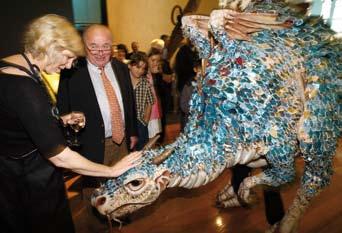
Mythic creatures have provided us with a BIG summer season. Mythic Creatures: Dragons, Unicorns & Mermaids is the travelling exhibition organised by the American Museum of Natural History, New York, in collaboration with the Australian National Maritime Museum, The Field Museum, Chicago, Canadian Museum of Civilization, Gatineau (Quebec), and Fernbank Museum of Natural History, Atlanta. The exhibition introduces a host of fantastic creatures: dragons, mermaids, gigantic birds, serpents, unicorns and a great many more. After the very enjoyable opening pictured on this page, the visitors simply poured through our doors and gave us one of the busiest summer holiday Januaries on record.
The number of visitors that month, close to 90,000, was roughly 30 per cent
up on our visitation for the previous January and 60 per cent up on the next best Sydney museum’s figures for the same period. Part of that success was due to some marvelous promotional opportunities that came to us with the help of one of our museum council members, Mr Peter Harvie, which gave the museum a high profile for the period. We were on television commercials, billboards and the back of buses all over Sydney.
It’s that sort of assistance that shows our governing council working most effectively for us, where its members help the museum to extend its influence and garner support from the wider community. In this edition of Signals we are profiling our museum council, so you can meet Peter and his fellow councillors on page 12.
critters by theatre company Erth; Chinese dragon dancers of Australian Yau Kung Mun Chinese Martial Arts inc. Photographer A Frolows /ANMM
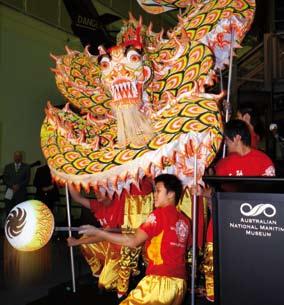
Si GNALS 90 M ARCH T o M AY 2010 48
Rubbing shoulders with some mythic creatures at the December opening of our exhibition of the same name were special guest Andy Muirhead of ABCTV's Collectors; director Mary-Louise Williams; senior curator Daina Fletcher and manager media and public affairs Bill Richards. Mythic
Hundreds of books something for everyone from key rings to shipmodels and boating clothes friendly service mail order Members discounts! open 9.30 am to 5 pm seven days a week Phone 02 9298 3698 or fax orders to 02 9298 3675 or email mlee@anmm.gov.au



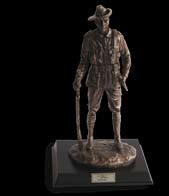


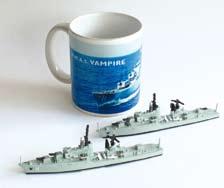


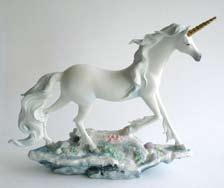
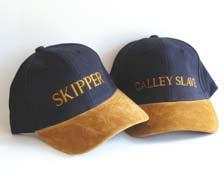

at annm.gov.au
shop online
Brass rum measure set in brass-inlaid box $60 Members $54 Moulded unicorn 26 cm long $49.95 Members $44.96 HMAS Vampire model $25 each Members $22.50 HMAS Vampire mug $15 Members $13.50 Nautical mugs just for you $29.95 Members $26.96 Brass bell 6” $105 Members $94.50 4” $49.95 Members $44.96 The Digger limited edition $99.95 Members $89.96 Dragon geode on Rock 45 cm tall $89.95 Members $80.96 Brass qilin or Chinese unicorn $79.95 each Members $71.96 Copper and brass bugle $49.95 Members $44.96 Nautical cap to identify your role on board $22 Members $19.80 Mythic Creatures light-up unicorn Special exhibition price $22
Rum Horatio Nelson decanter $250 Members $225
Pussers
Australian National Maritime Museum open daily except Christmas Day
9.30 am to 5 pm (6 pm in January)
Darling Harbour Sydney NSW Australia
Phone 02 9298 3777
Facsimile 02 9298 3780
ANMM council
Chairman Mr Peter Sinclair am csc
Director Ms Mary-Louise Williams Councillors
Rear Admiral Stephen Gilmore am csc ran
Mr
Ms
Dr
Emeritus
Mr
Mr
Mr
Signals
iSSN 1033-4688
Editor
9298 3647
Advertising enquiries
Jeffrey Mellefont 02 9298 3647
Deadline end of January, April, July, october for issues March, June, September, December
Signals back issues
Back
Peter Harvie
Robyn Holt
Julia
Horne
Professor John Penrose
John Rothwell
Ann Sherry
ao Ms
ao
Shane Simpson
Neville Stevens
ao
Printed
Australia
Pegasus Print Group
Jeffrey Mellefont 02
Assistant editor Penny Crino Staff photographer Andrew Frolows Design and production Austen Kaupe
in
by
issues $4 10 back issues $30
issue
Matt Lee
from Signals may be reproduced only with the editor’s
The Australian National Maritime Museum is a statutory authority of the Australian Government For more information contact us at: GPo Box 5131 Sydney NSW 2001 Australia www.anmm.gov.au
Extra copies of current
$4.95 Call
at The Store 02 9298 3698 Material
permission 02 9298 3647


































































 Mythic Pegasus
Harbourside Mythic Flix
Mythic Pegasus
Harbourside Mythic Flix



























 HM Bark Endeavour replica under plain sail in fair weather en route to Newcastle Maritime Festival in 2008.
HM Bark Endeavour replica under plain sail in fair weather en route to Newcastle Maritime Festival in 2008.






































